March 18th, 2024 - Trip to Tortuguero
We got up quite early, as the tour starts at 6:30 am. A small bus took us to Caño Blanco, from where we continued by boat.
In mountainous Costa Rica, this means: up-down-bend right-bend left-especially sharp bend. The road straightened out for a short time and we were able to recover a little, then came the gravel road with lots of potholes, so we had to accelerate, stop, jerk and so on. It was a real torture.
Getting to Tortuguero is an adventure of its own, as the community can only be reached by boat or plane - there are no roads here. We therefore changed our means of transportation in Caño Blanco. A speedy boat took us to Tortuguero in about an hour through rivers and mangrove forests.
Tortuguero is remotely located on the Caribbean coast of Costa Rica, around 40 km from the Nicaraguan border in the province of Limón. The name Tortuguero translates to “place where the turtles come” and is derived from the Spanish word for turtle, tortuga. Tortuguero is known as one of the most important protected areas for sea turtles in the world. From July to October, thousands of green sea turtles come to the beaches to lay their eggs, making Tortuguero a mecca for nature lovers.
The Tortuguero National Park is home to the village of the same name, where around 700 people live. The national park has been protected since around 1975. Today, the main source of income for the inhabitants of Tortuguero is the growing tourism industry, mainly due to the sea turtles that regularly nest on Tortuguero beach.
The humid, tropical climate, which is responsible for the lush rainforest, characterizes the entire area. Despite its popularity with tourists, Tortuguero has retained its originality, as there are no large hotel chains, only small lodges close to nature. Ecotourism and sustainability are the focus here, and visitors can take part in guided tours that allow them to immerse themselves in the nature and culture of the region.
The national park is home to capuchin monkeys and sloths, among others. We were particularly interested in the great green macaws (Ara ambiguus) that live there.
On our boat trip to the lodge we spotted a few animals:
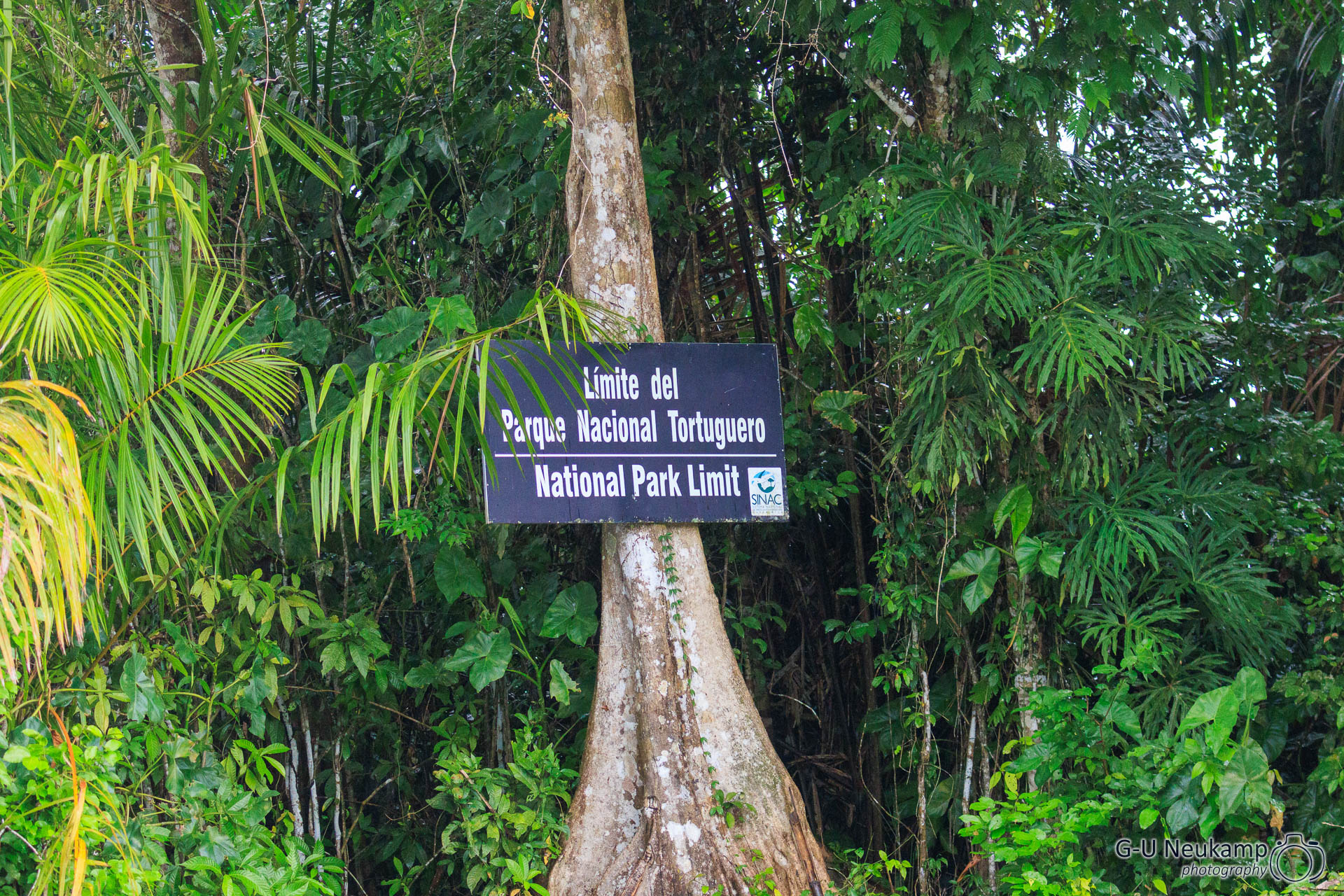
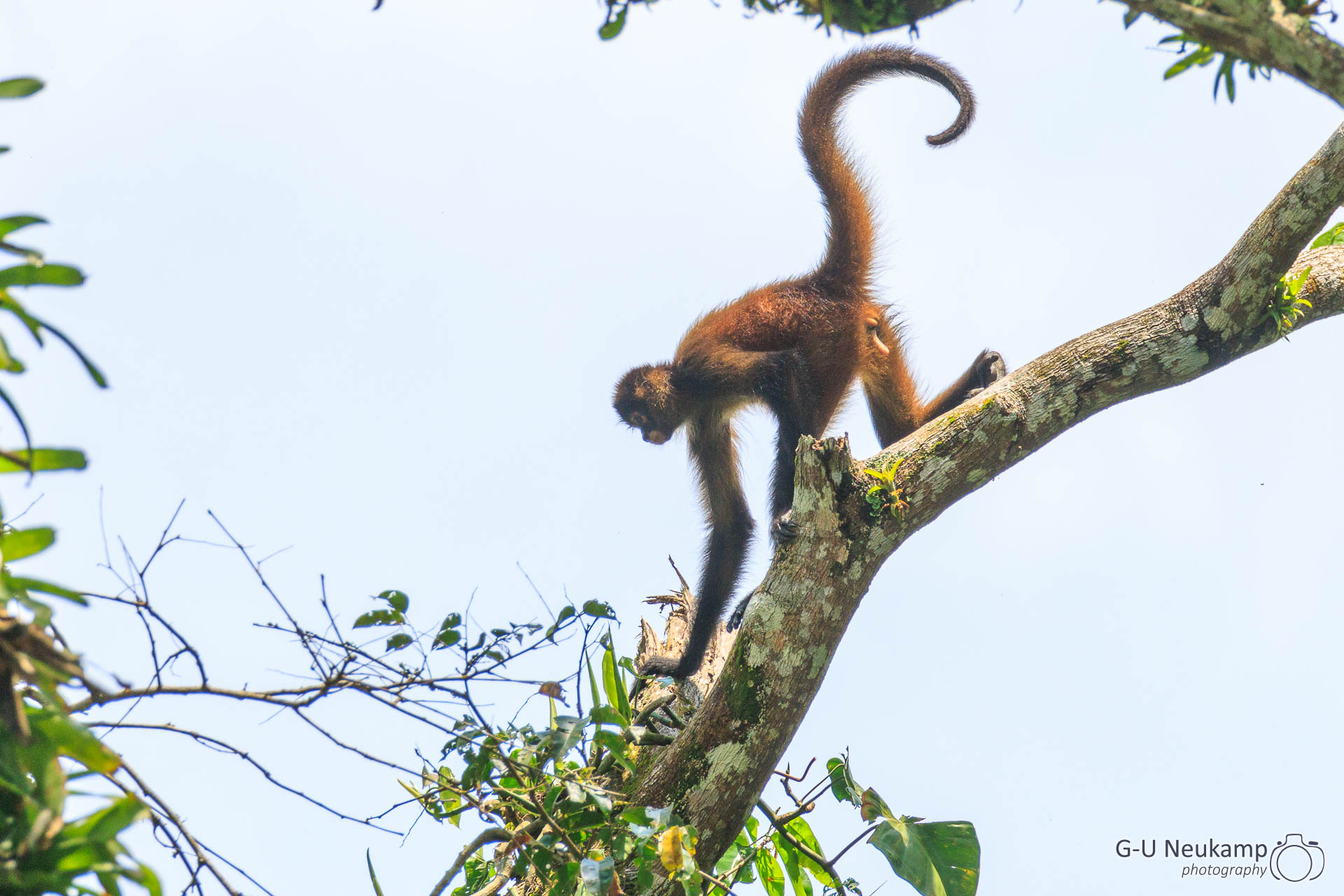
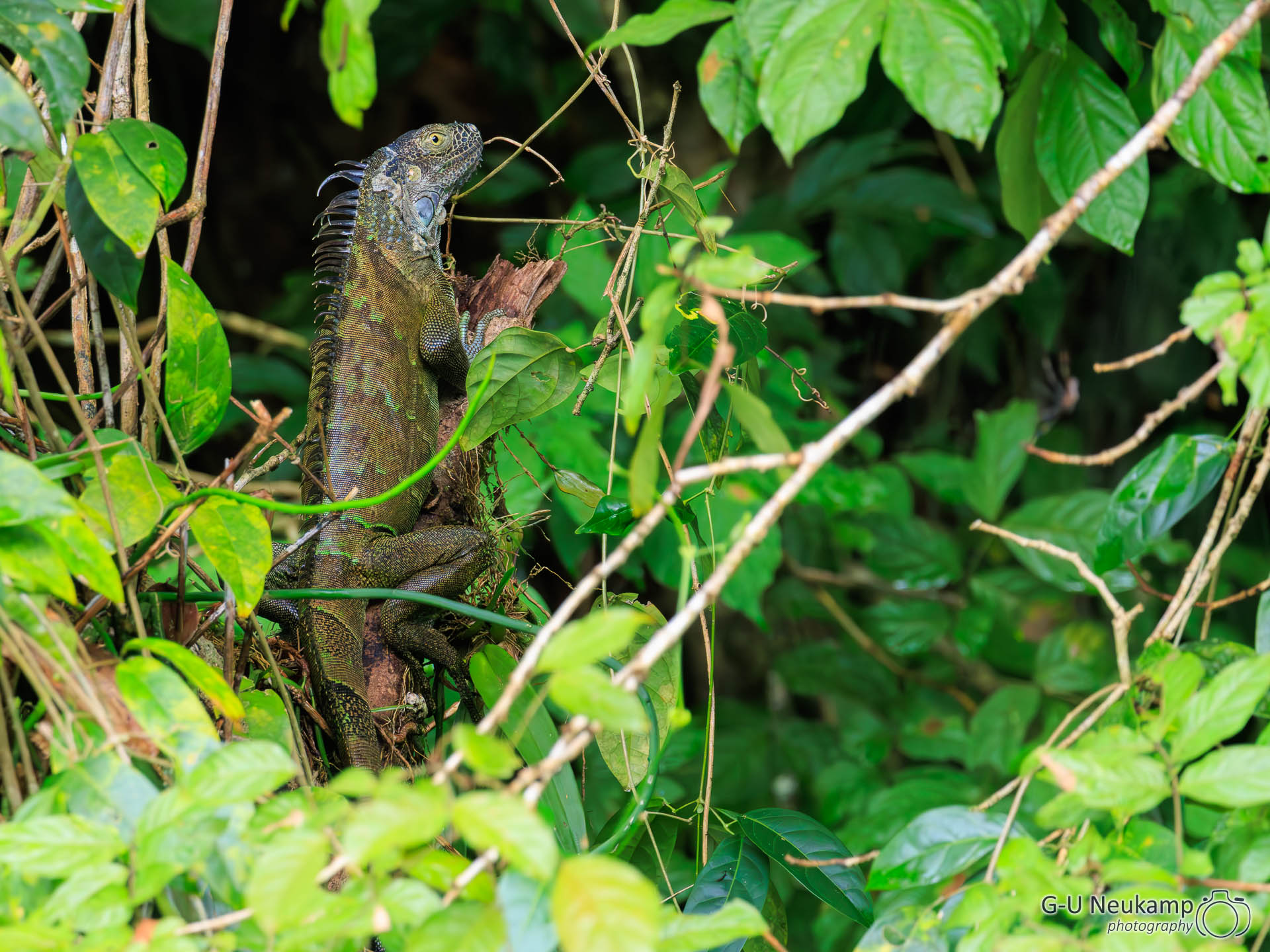

We arrived at our lodge (Tortuga Lodge & Gardens), which is beautifully situated directly on the banks of the Tortuguero River, shortly after 12:00 noon. We were welcomed with a delicious welcome juice and then went straight to a very good three-course lunch. A large green iguana watched us as we relaxed on the terrace.
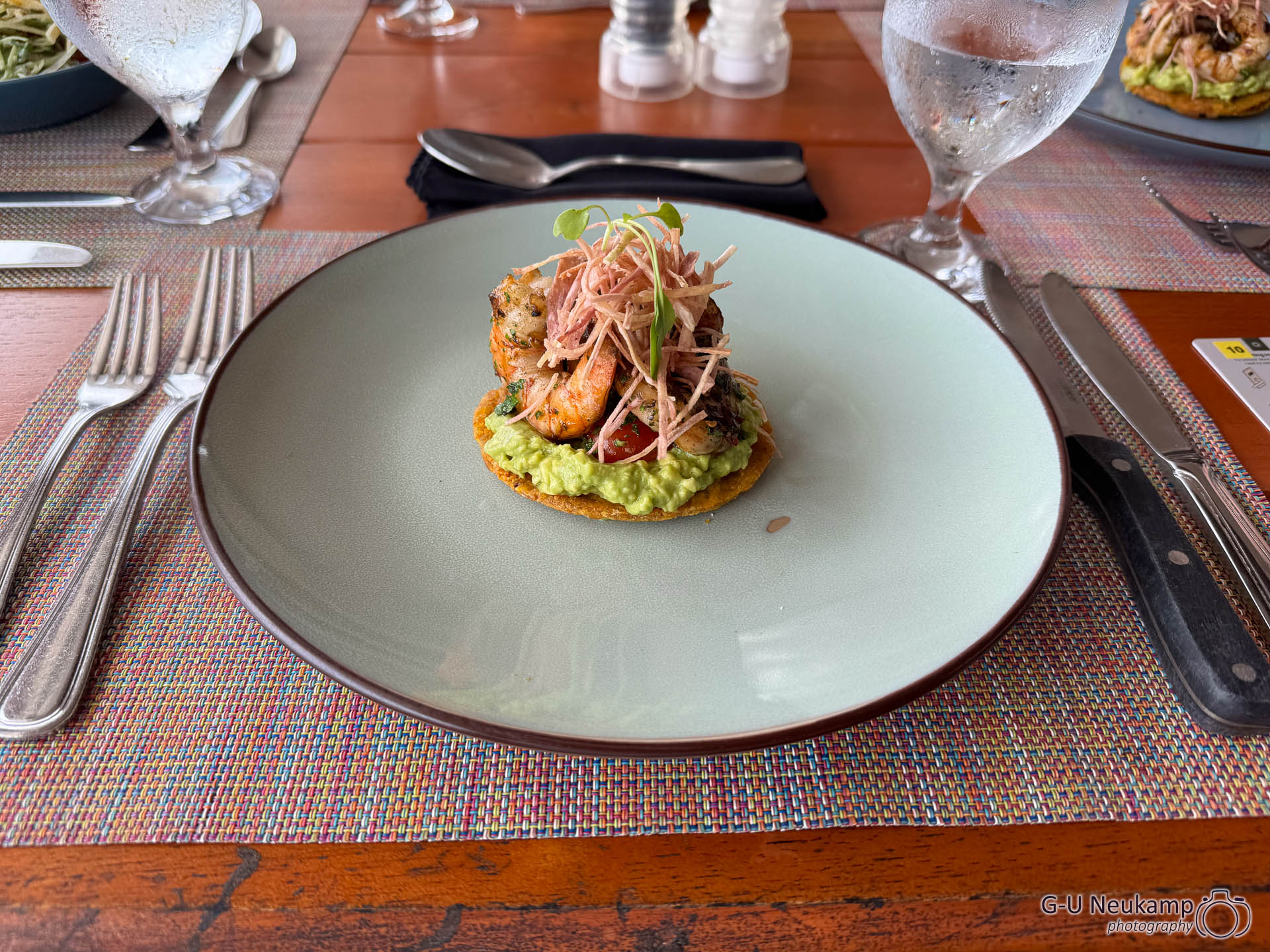
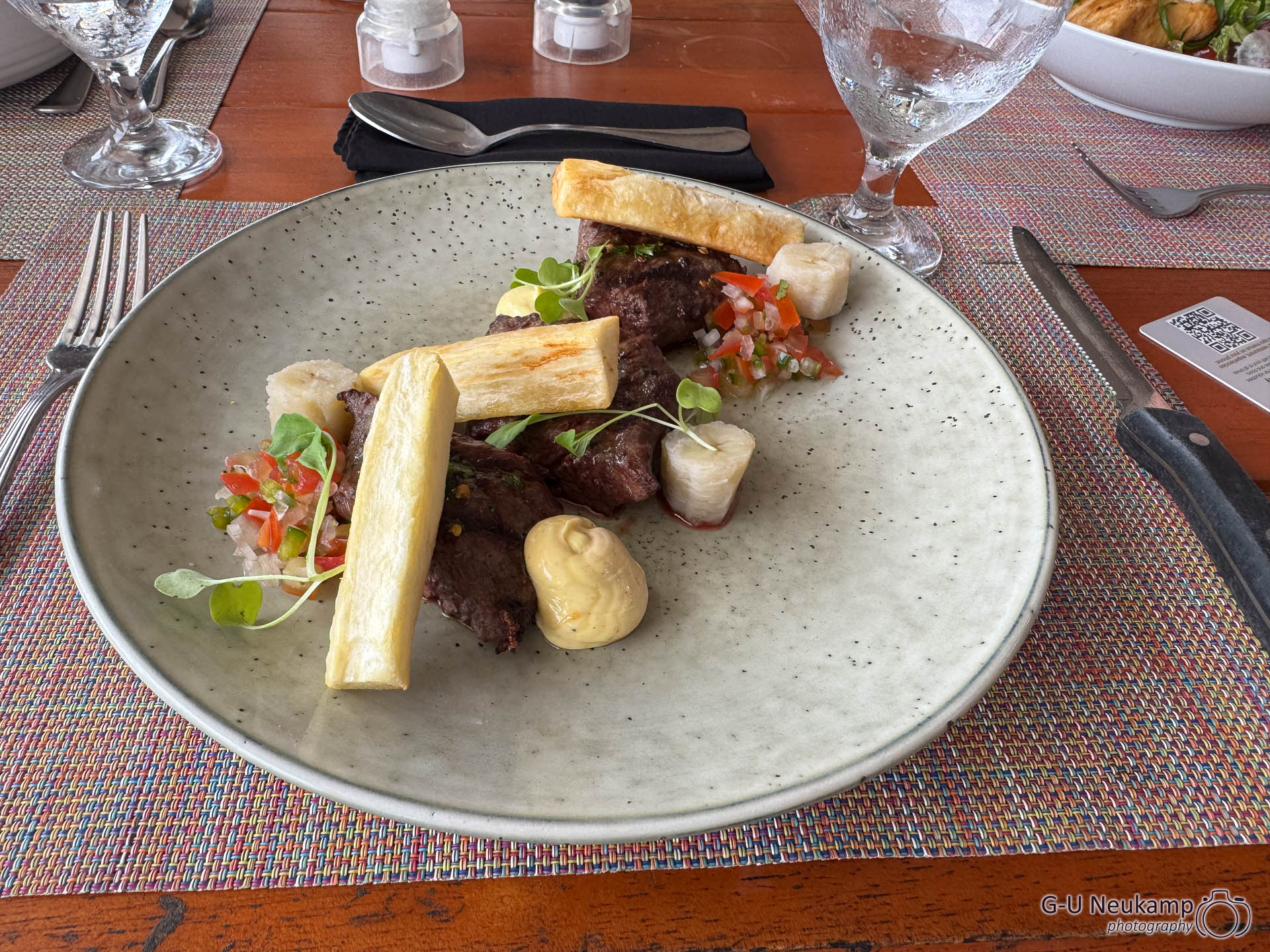
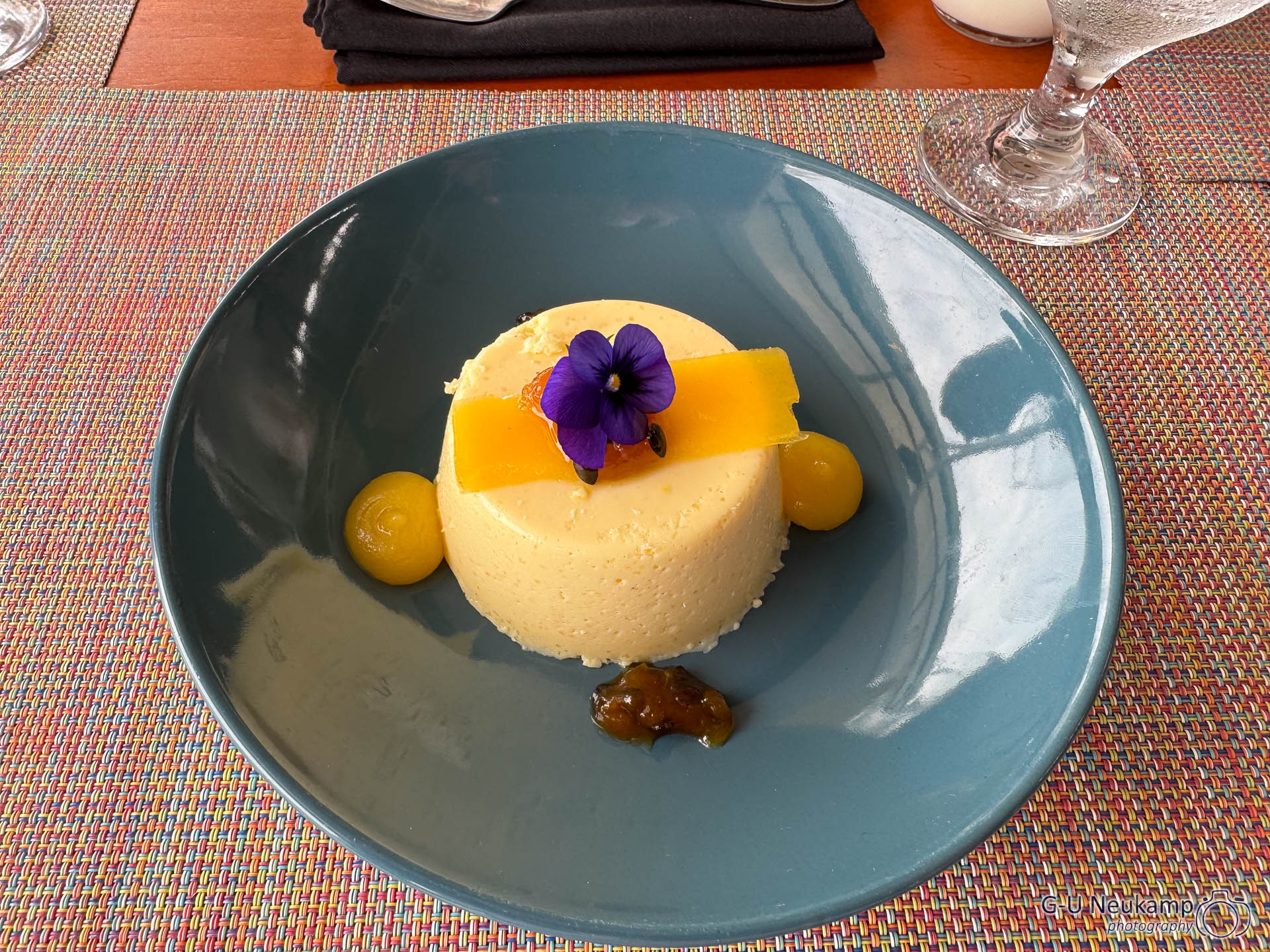
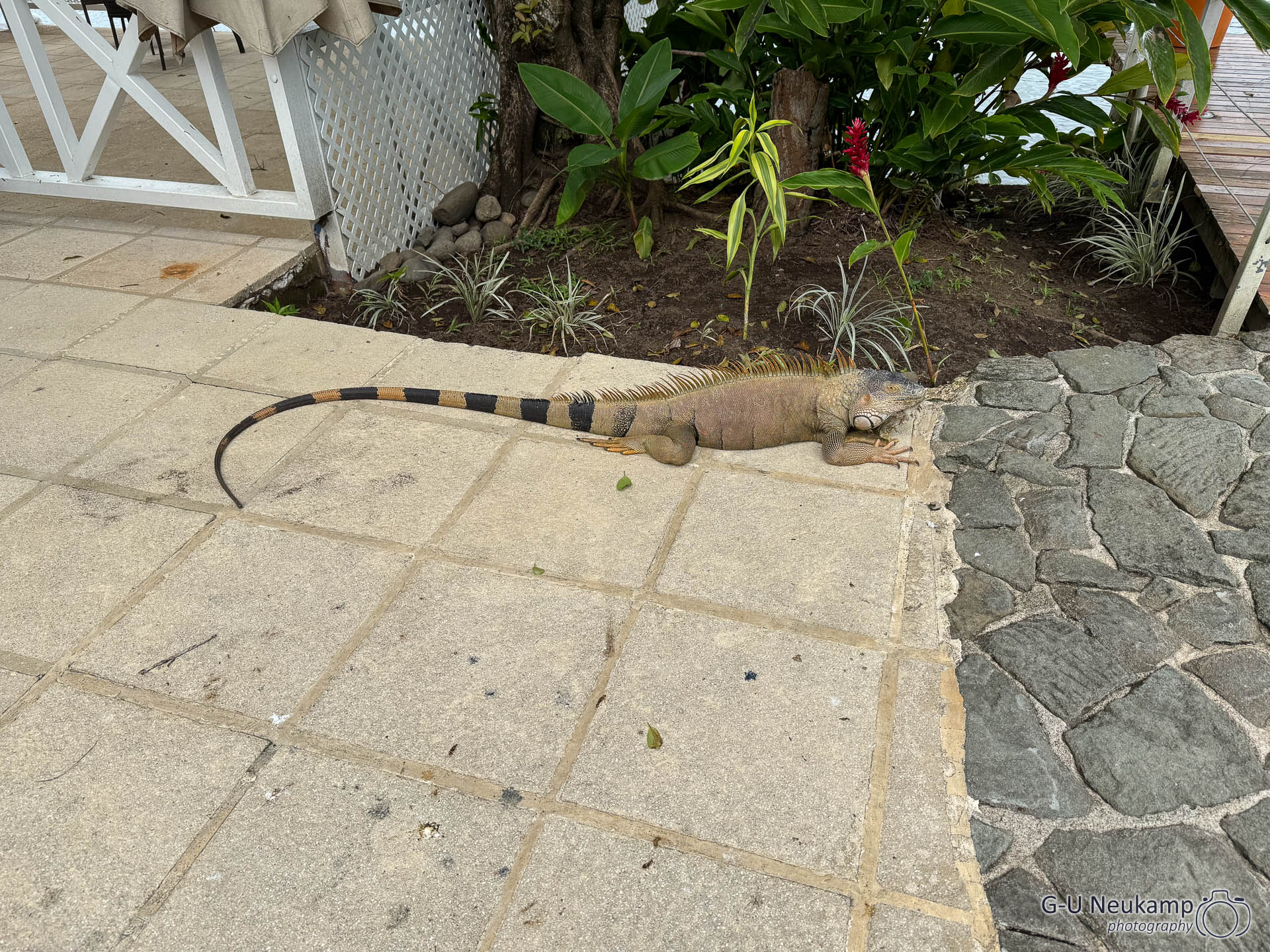
We sat on the terrace overlooking the river. The opposite side of the river forms a narrow, elongated spit of land with a landing strip for smaller planes, behind which is a long beach and the Caribbean Sea. The green sea turtles lay their eggs on this beach from July to October - unfortunately we were there too early in the year.
Facts about the green sea turtle
- Depending on the location of the nest and the average temperature during the development of the eggs, more males or females are born (cooler: mainly males, warmer: mainly females)
- Green sea turtles are considered critically endangered and are on the red list of endangered species
- They can live up to 70-80 years in the wild
- In total, they can reach a size of up to 140 cm and weigh up to 190 kg
- Every 2-5 years, the females of the green sea turtle return to the beaches where they were born. There they know that the conditions are right and that their offspring will probably develop well.
- Usually several hundred or even thousands of females come to the beaches every night and dig their nests.
- The hatching season then starts in September - after around 50 days of incubation - and lasts until November
Tourists can watch the female turtles lay their eggs between July 1st and October 31st. The national park authority regulates the flow of visitors. Observation is only possible in the evening between 08:00 p.m. and midnight with a certified guide. Tickets can be purchased from the national park authority or booked through a lodge. So perhaps a reason to go there again later in the year…
Here are some pictures of the lodge - from the boat and with the drone.
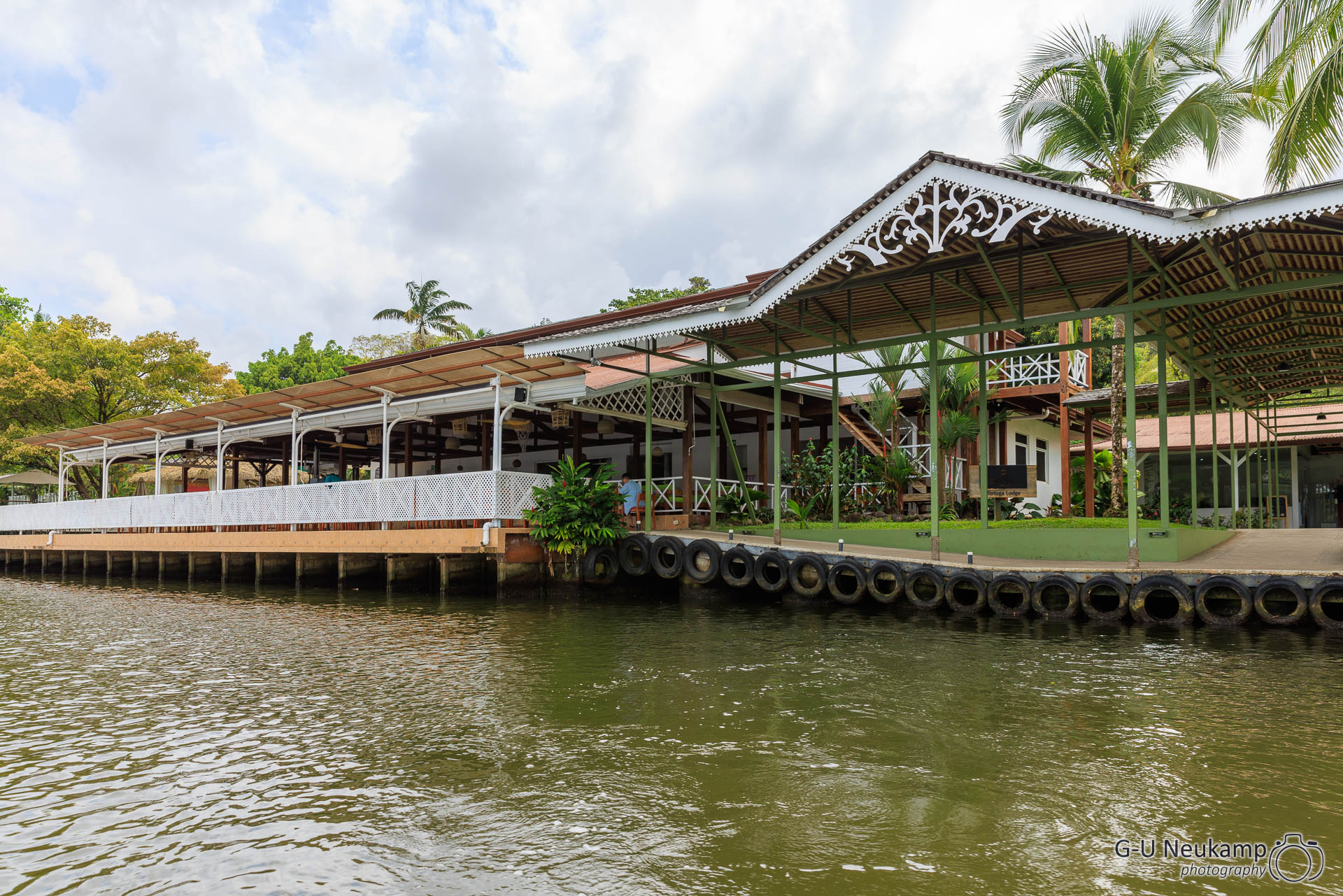
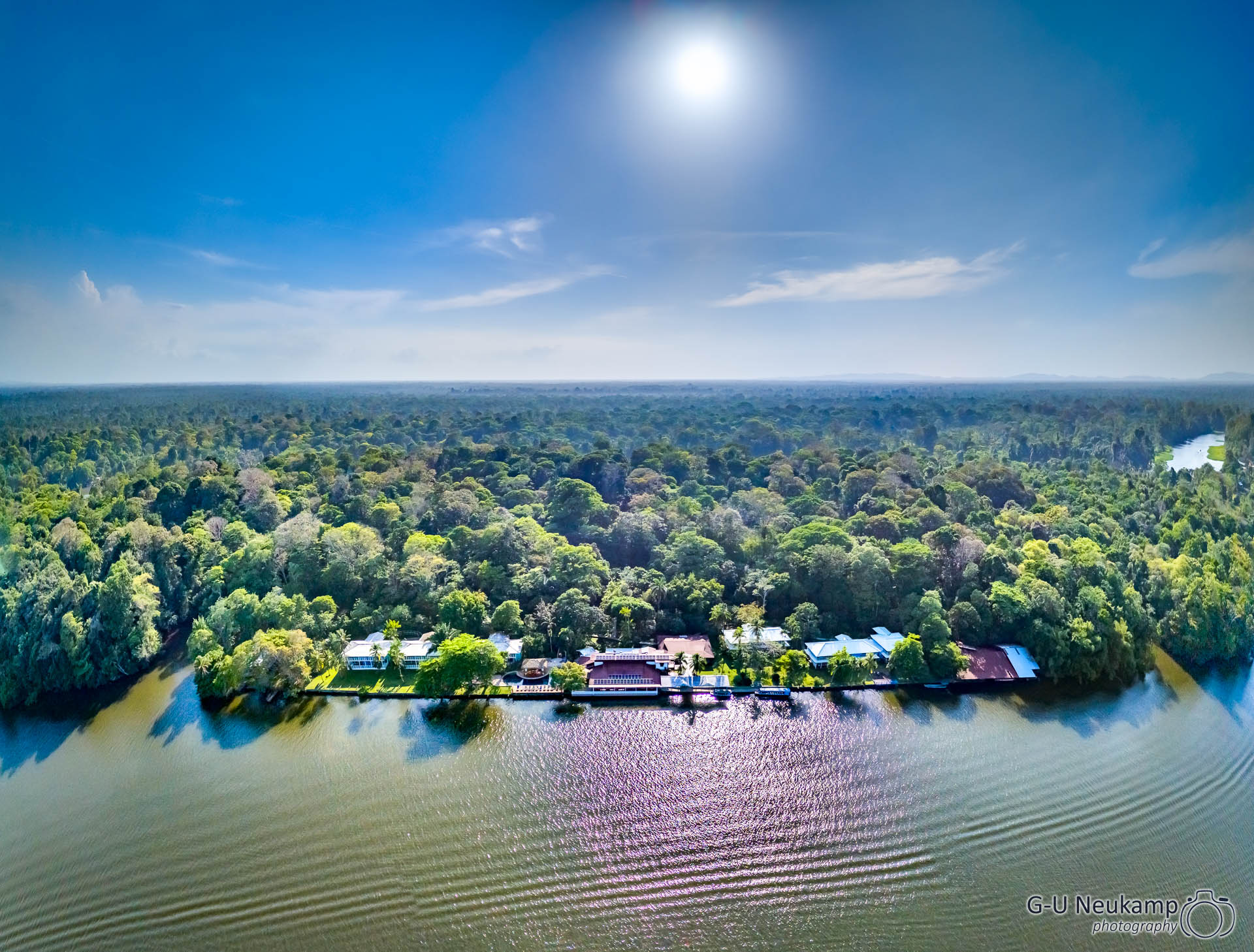
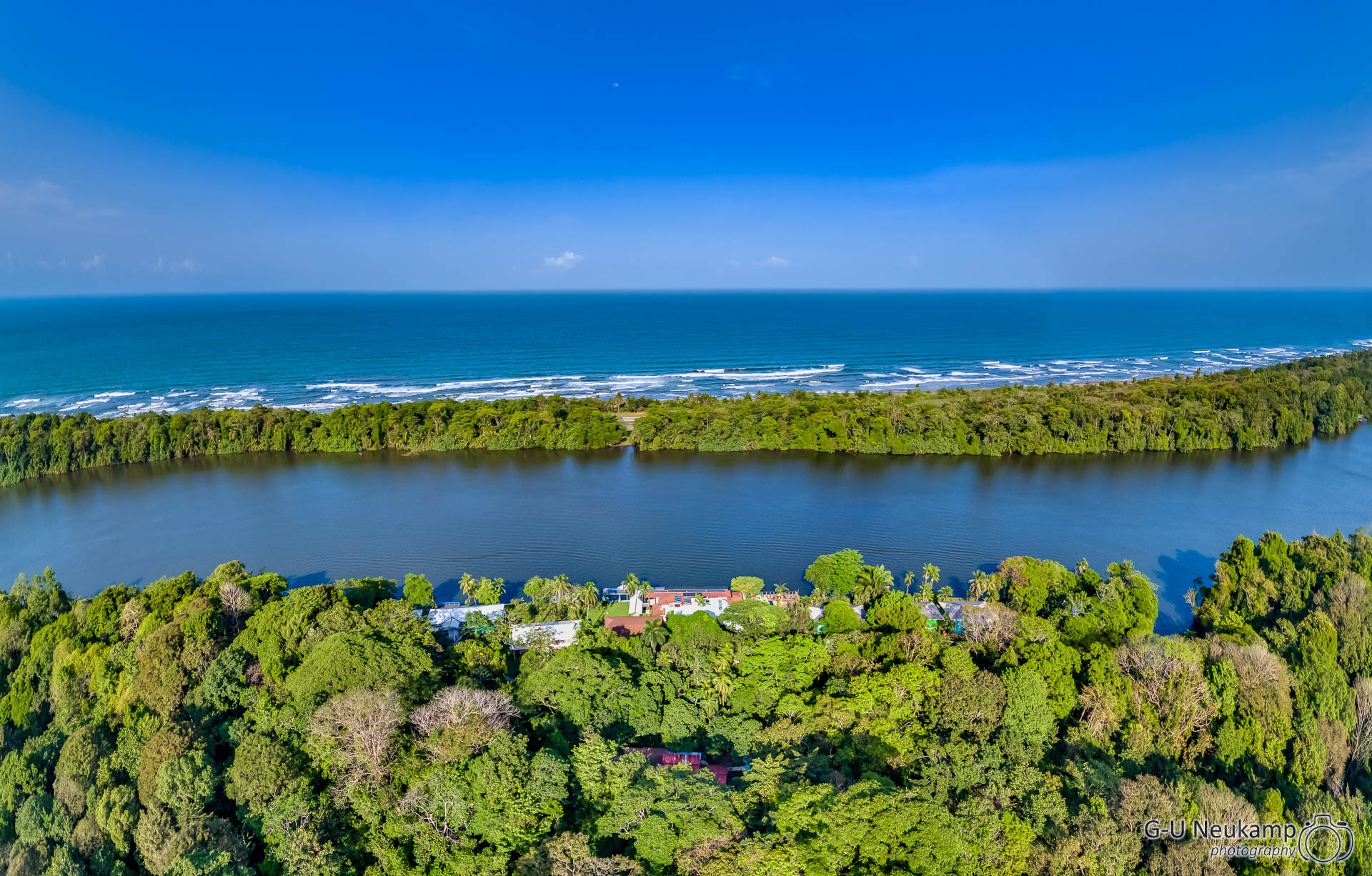
We were able to relax a little during lunch, after which we moved into our very nice rooms with a terrace overlooking the river. Here are some pictures of our room:



After quickly clearing out our luggage, we went on to visit the “city” and the Sea Turtle Conservancy. In the evening, we had also signed up for a night walk through the jungle. Phew….. Pure stress!
We took the shuttle boat from the lodge to the other side of the river and got off at the Sea Turtle Conservancy. There we got lots of information and watched a movie about the rescue and protection of sea turtles. We then walked towards the village and saw a three-fingered sloth in a tree right on the path. It was hanging high up in the tree and looked as relaxed as you would imagine. It was moving, but only veeeeeeeeeeery slowly. On the very first day in Tortuguero, I managed to take one of my favorite pictures of this trip:

The three-fingered sloth, known as Bradypus, is a fascinating mammal from the tropical rainforests of Central and South America. With its characteristic long, curved claws and round face, it is perfectly adapted to life in the trees. The sloth’s fur is often greenish in color as it is colonized by algae, which provides it with additional camouflage.
Three-fingered sloths are extremely slow animals, moving only about 0.24 kilometers per hour, which is due to their low-energy diet of leaves. They sleep up to 20 hours a day and digest their food extremely slowly. Reproduction is also leisurely: after a gestation period of around six months, the female gives birth to a young that clings to its mother until it becomes independent after around a year.
As we continued towards the Tortuguero Village, we heard a loud screeching in the trees and discovered another highlight: great green macaws (Ara ambiguus) were sitting in the almond trees and filling their bellies.
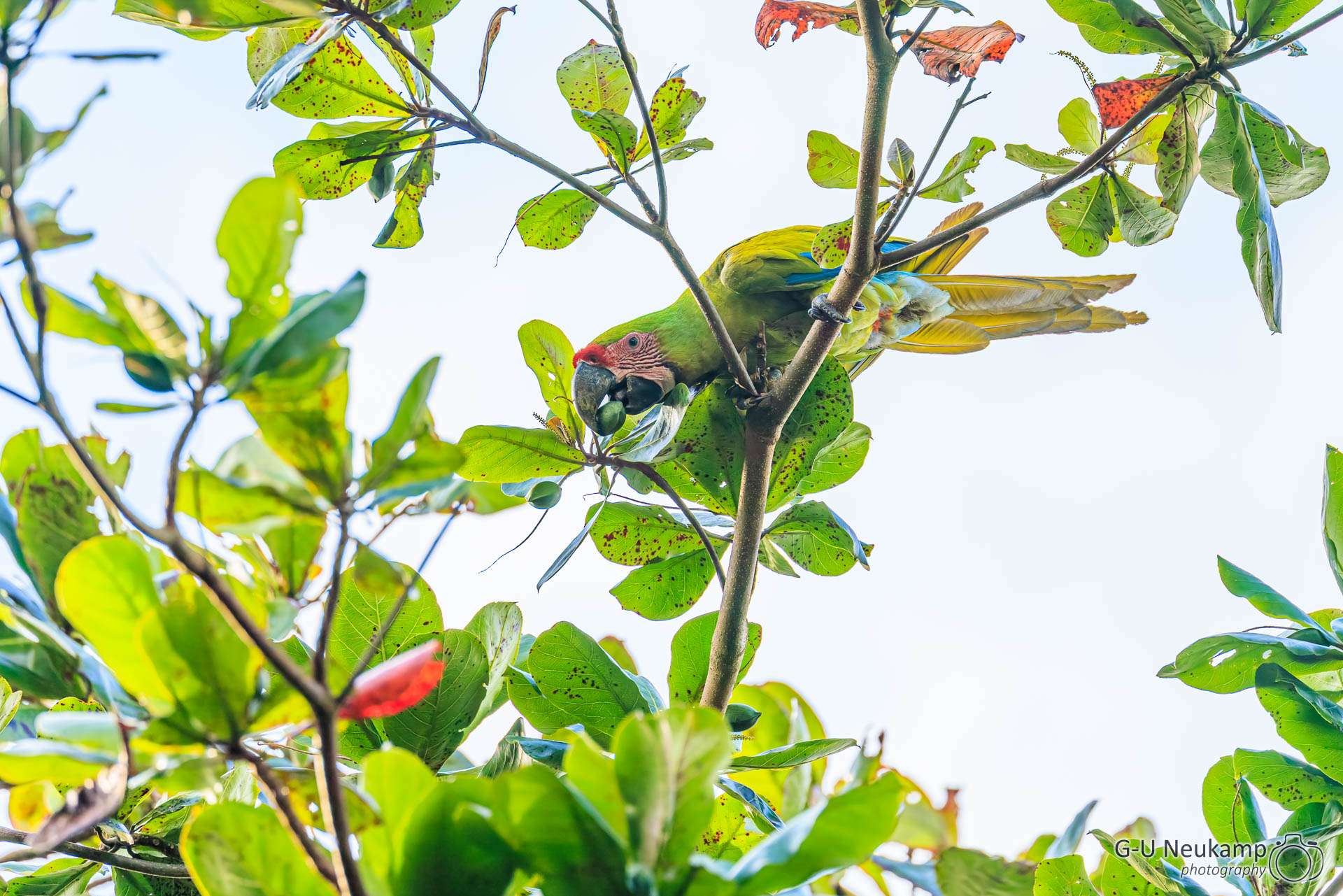
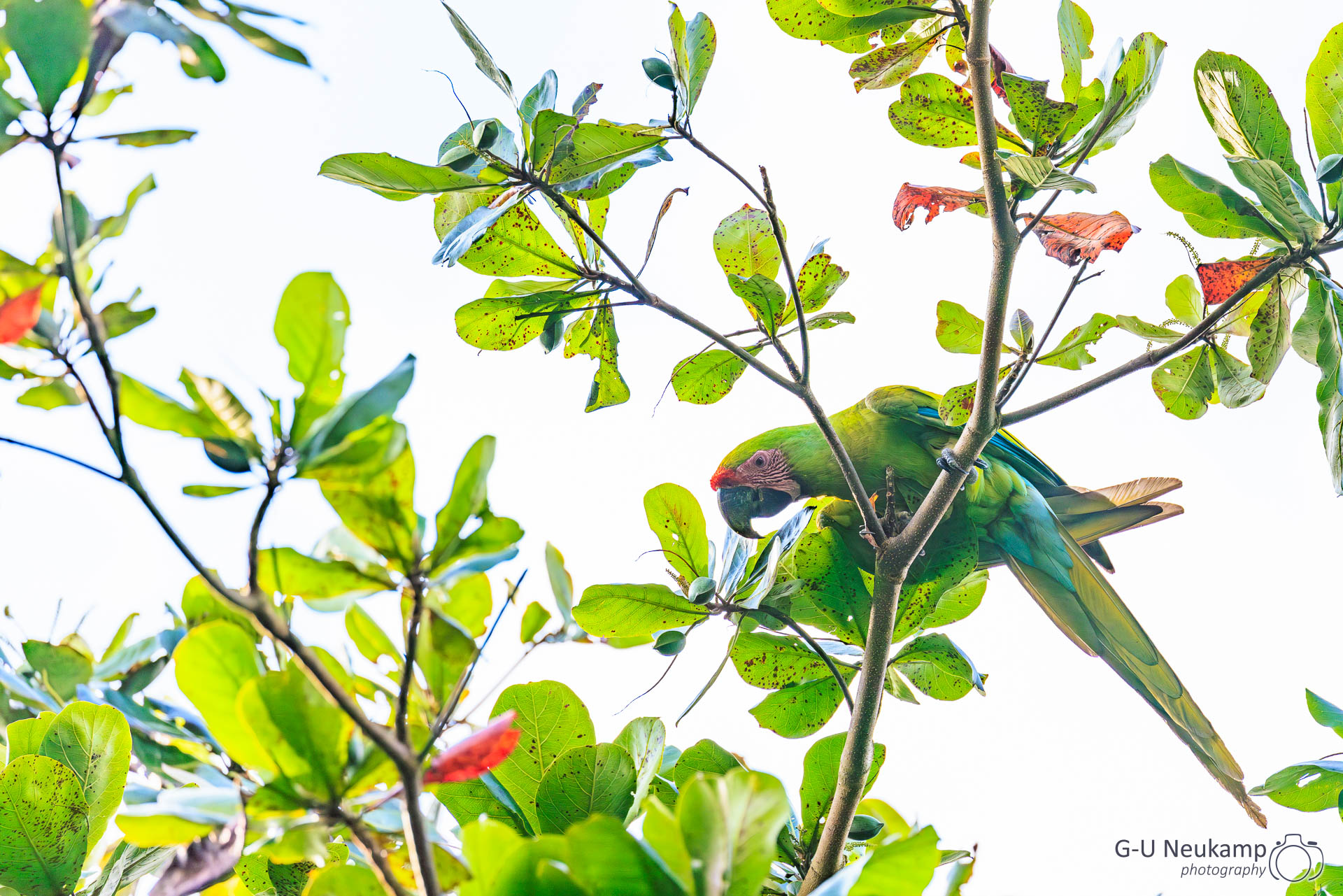

Afterwards, we strolled through the small village of Tortuguero and had a real Caribbean feeling. The village itself is small and charming, with colorful houses, cozy bars and restaurants and small souvenir stores. There are no cars, which gives the place a quiet, relaxed atmosphere.
You can also observe the daily life of the locals, who live from fishing and tourism. At the end of our tour, we discovered a pair of Black-mandibled toucans (Ramphastos ambiguus) in a tree on the grounds of the tiny church in the village.
As photogenic as they were dressed, they probably wanted to go to their church wedding :

We then took the shuttle boat back to the lodge. At around 5:30 pm, we met up with our guide Miguel (called Monkey) and other interested parties, put on our rubber boots and went into the jungle behind the hotel. A nocturnal guided tour!
That was quite scary. As Costa Rica is not far from the equator, it is practically always equinox here, just as it is in East Africa. This means that it gets dark very quickly around 18:00. And by dark I mean REALLY dark, there is no light pollution here!
You could therefore see almost nothing in the jungle until the light of the flashlight hit it. To my wife’s horror, it was usually some kind of spider 🕷️, one scarier than the other, or a beetle! She was therefore very happy when the tour was finished. Here are some photographic results of the nocturnal tour:
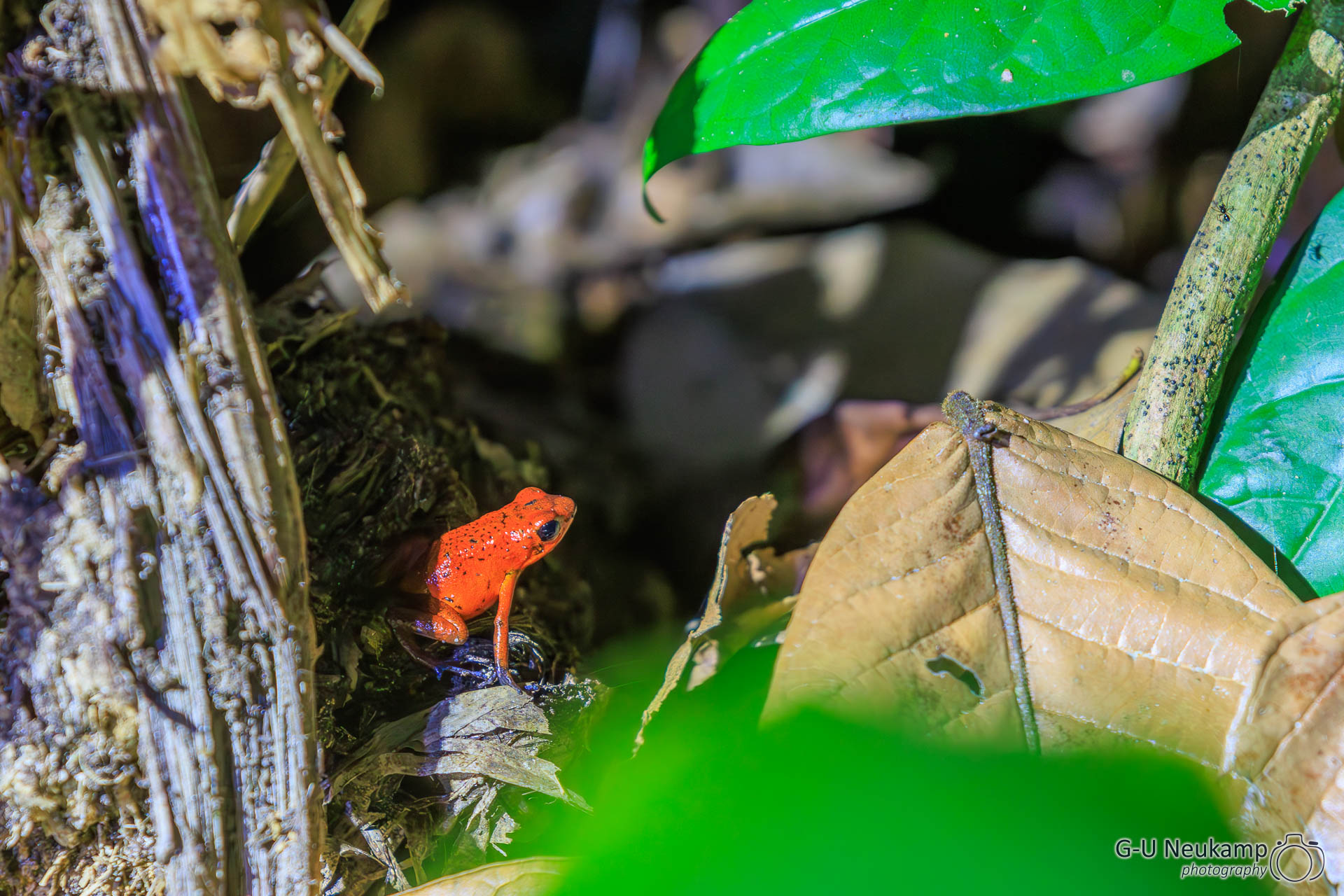
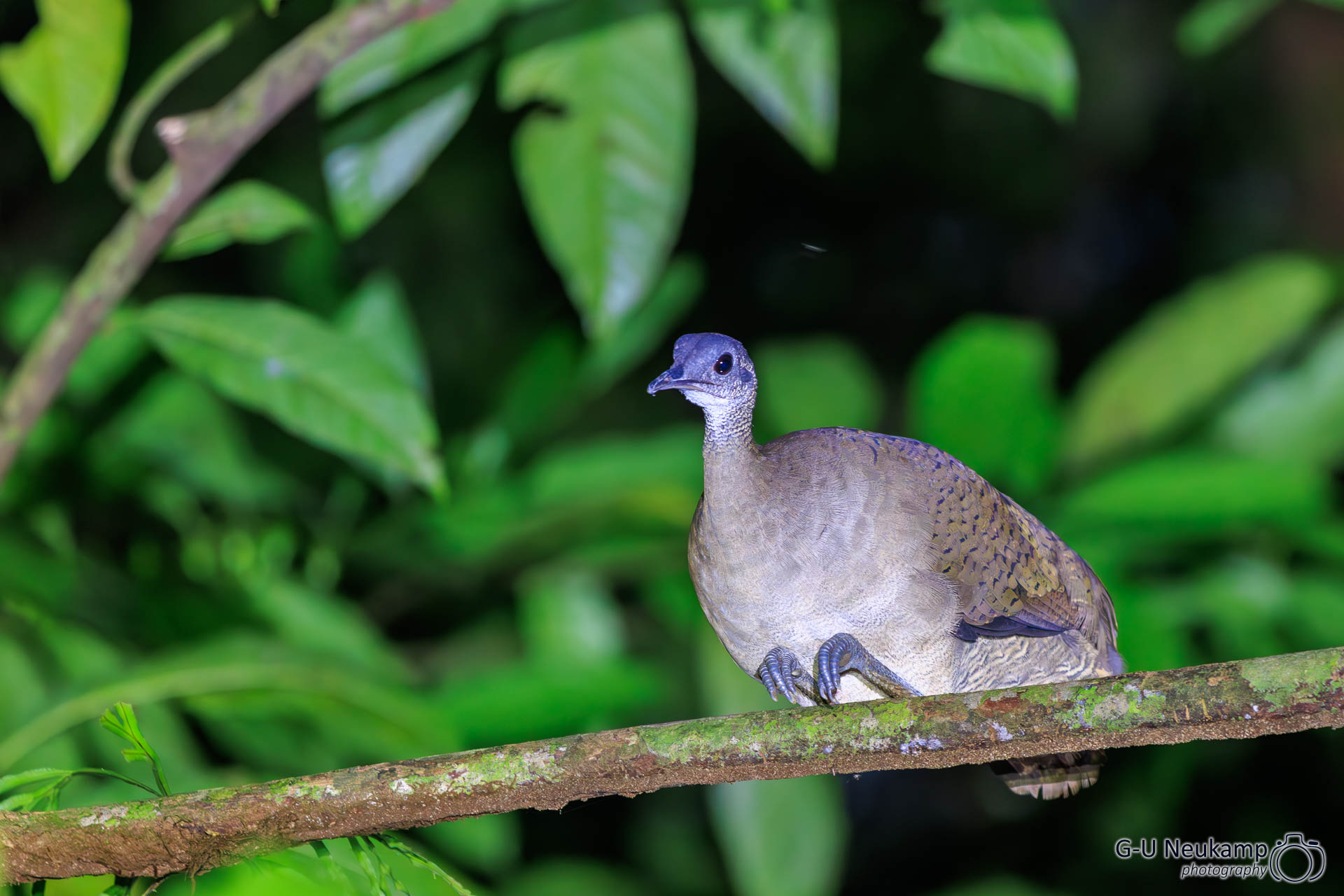
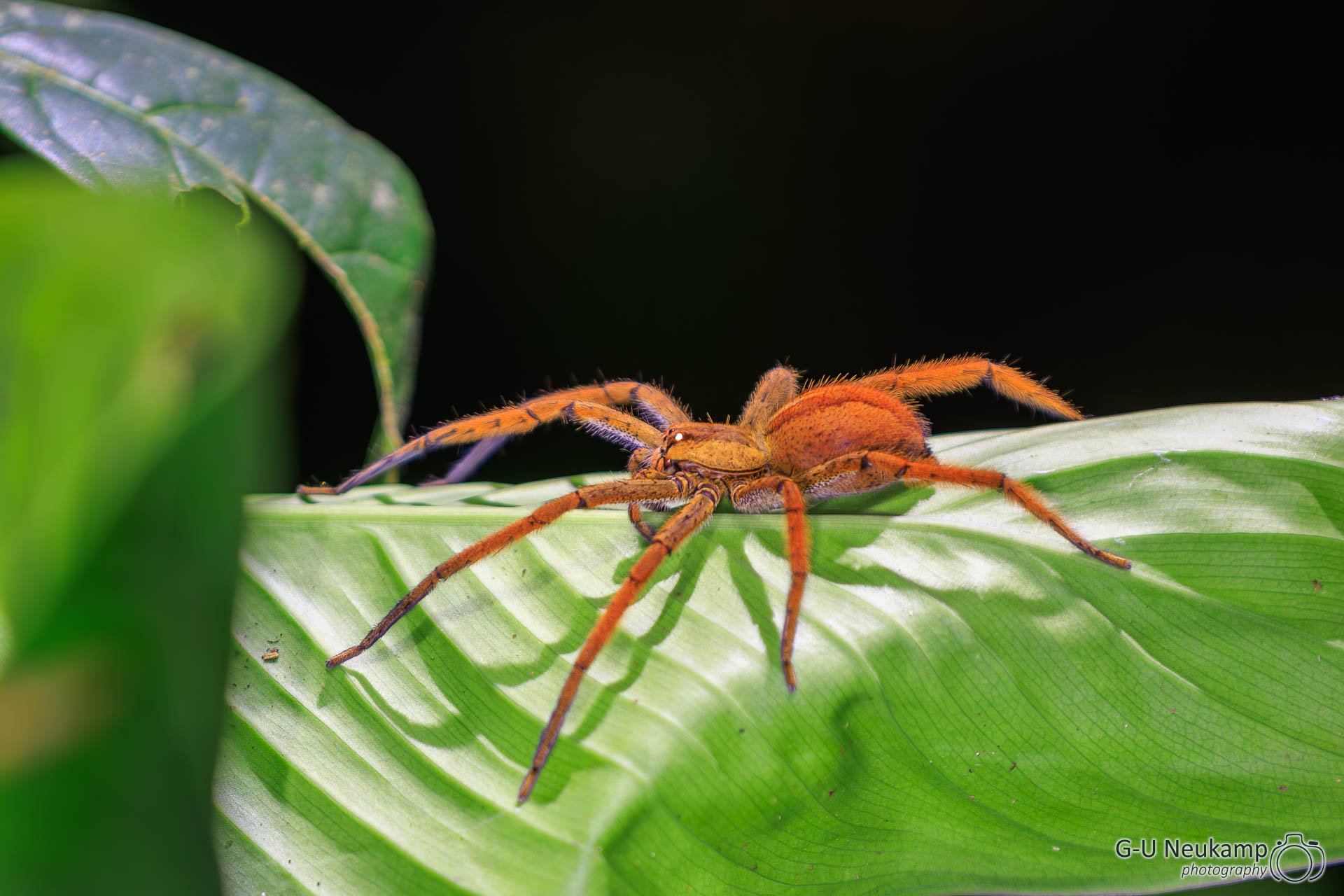
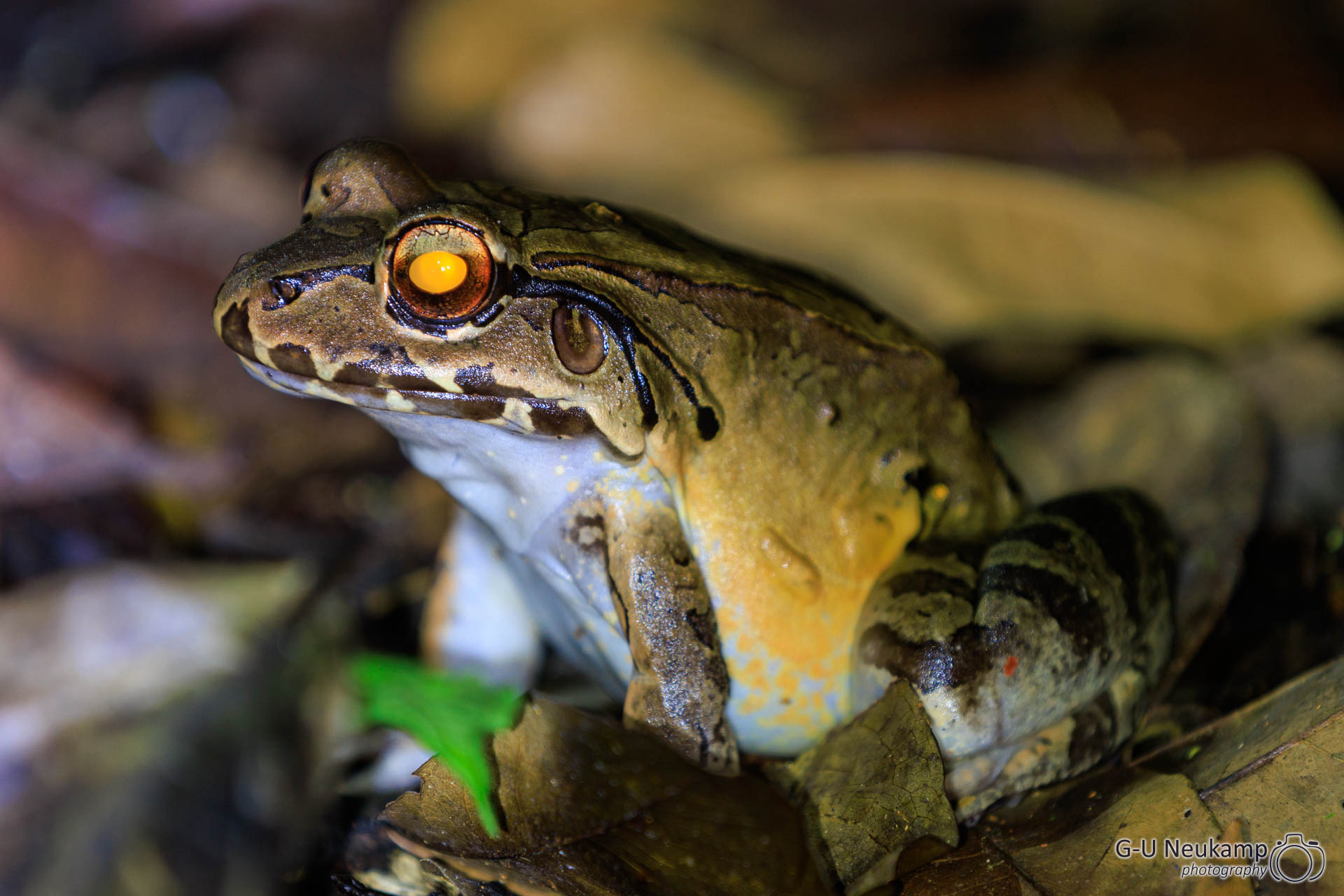
To make up for the scary adventure, we had another delicious dinner.
March 19th, 2024
We got up early again. At 6:00 am, we met at the jetty for a boat tour through the mangrove forest. As in Africa, the animals in the wild are best observed in the early hours of the morning. Here is our boat with guide:

We set off shortly after sunrise. First of all, we spotted howler monkeys in the trees not far from our hotel:
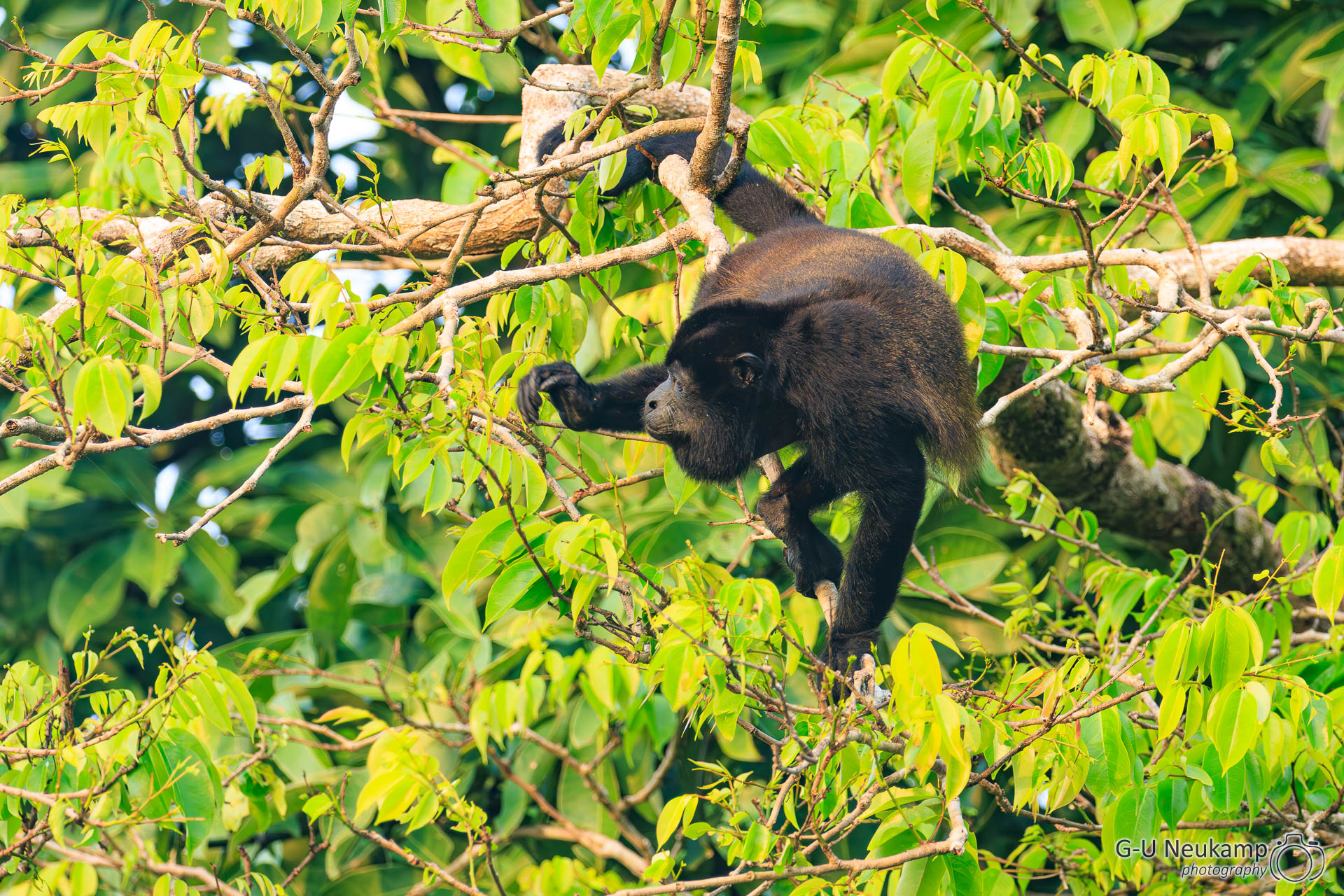
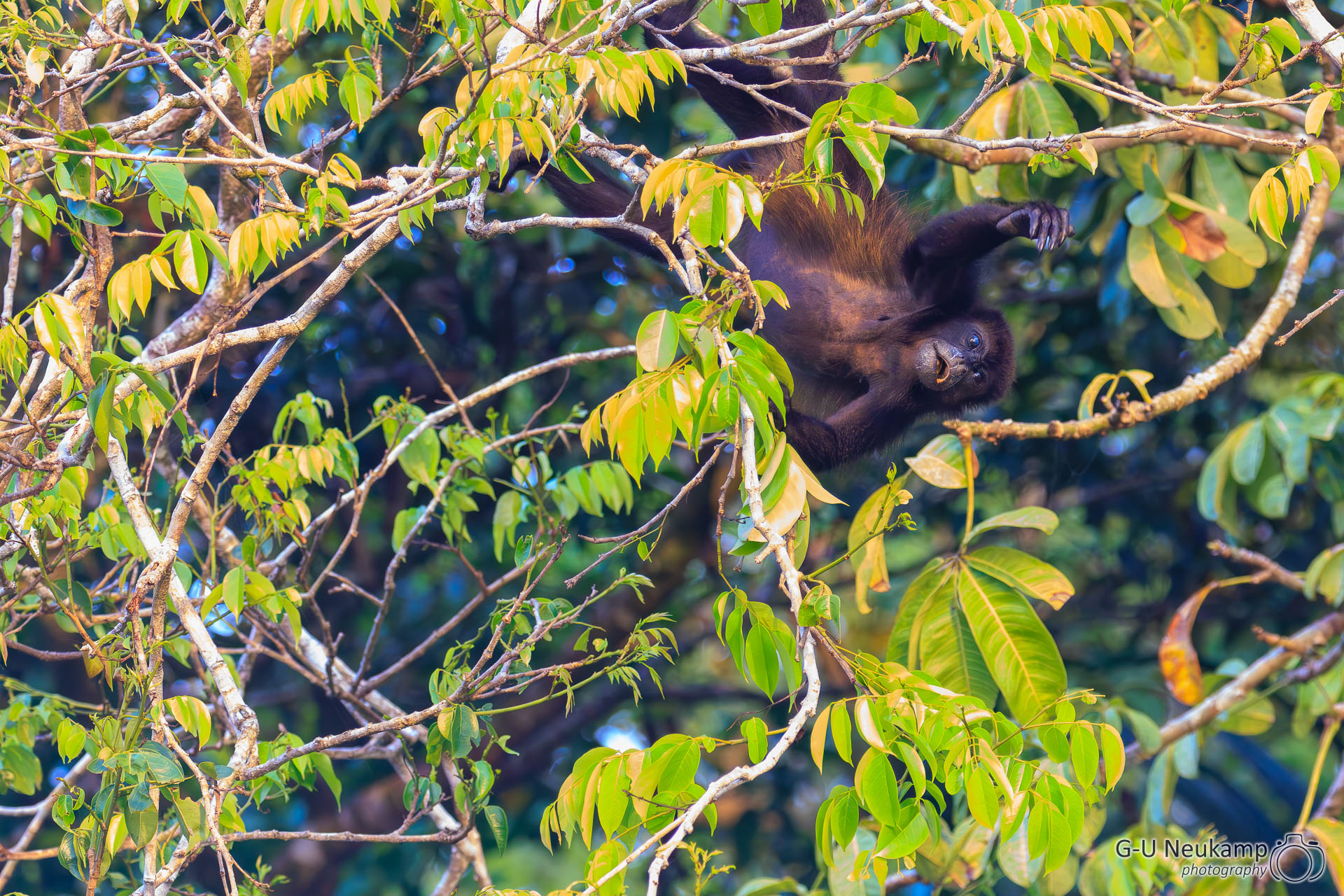
They lived up to their name, their calls could be heard from far and wide. There were also lots of birds to see on the tour, here is a small selection:
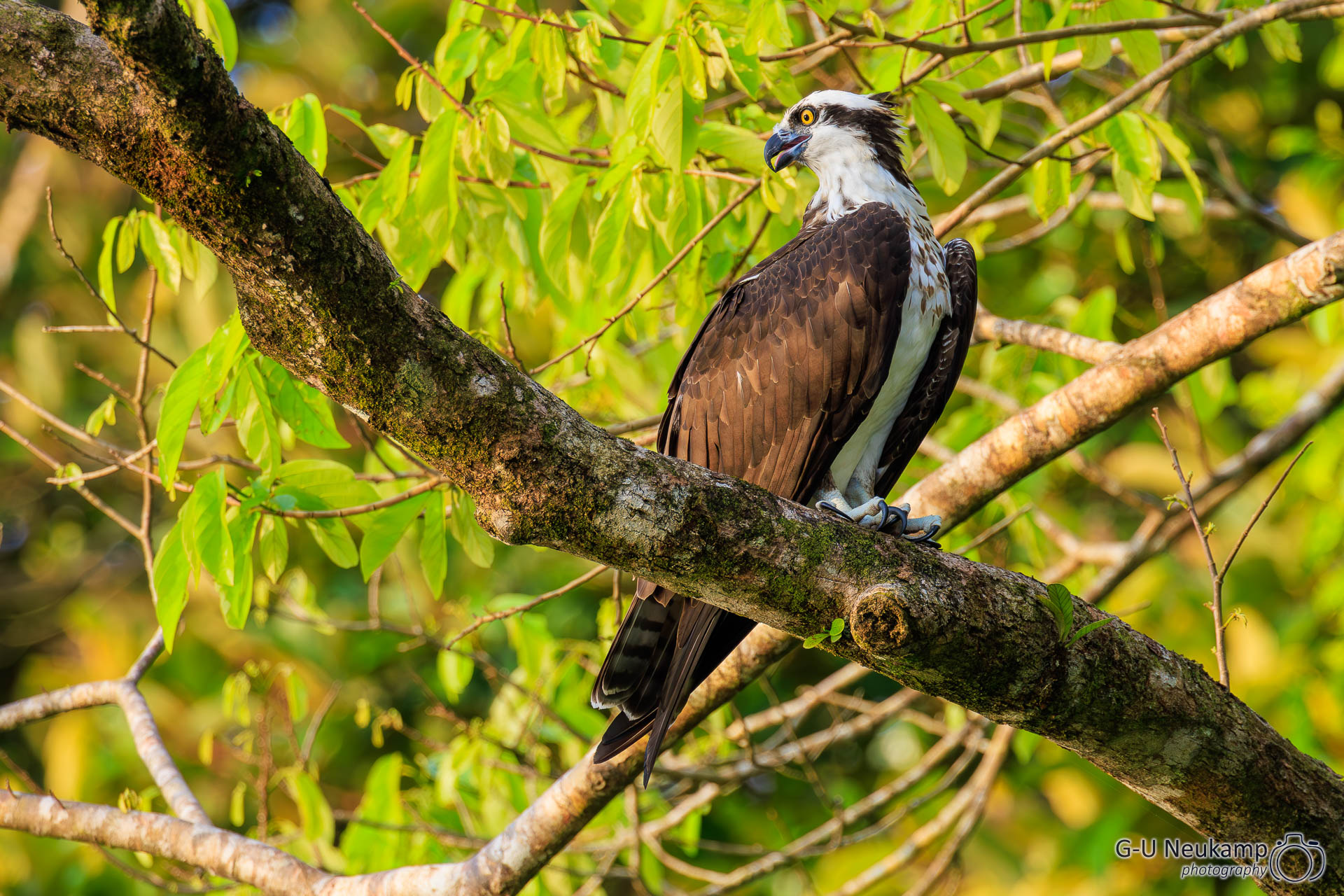
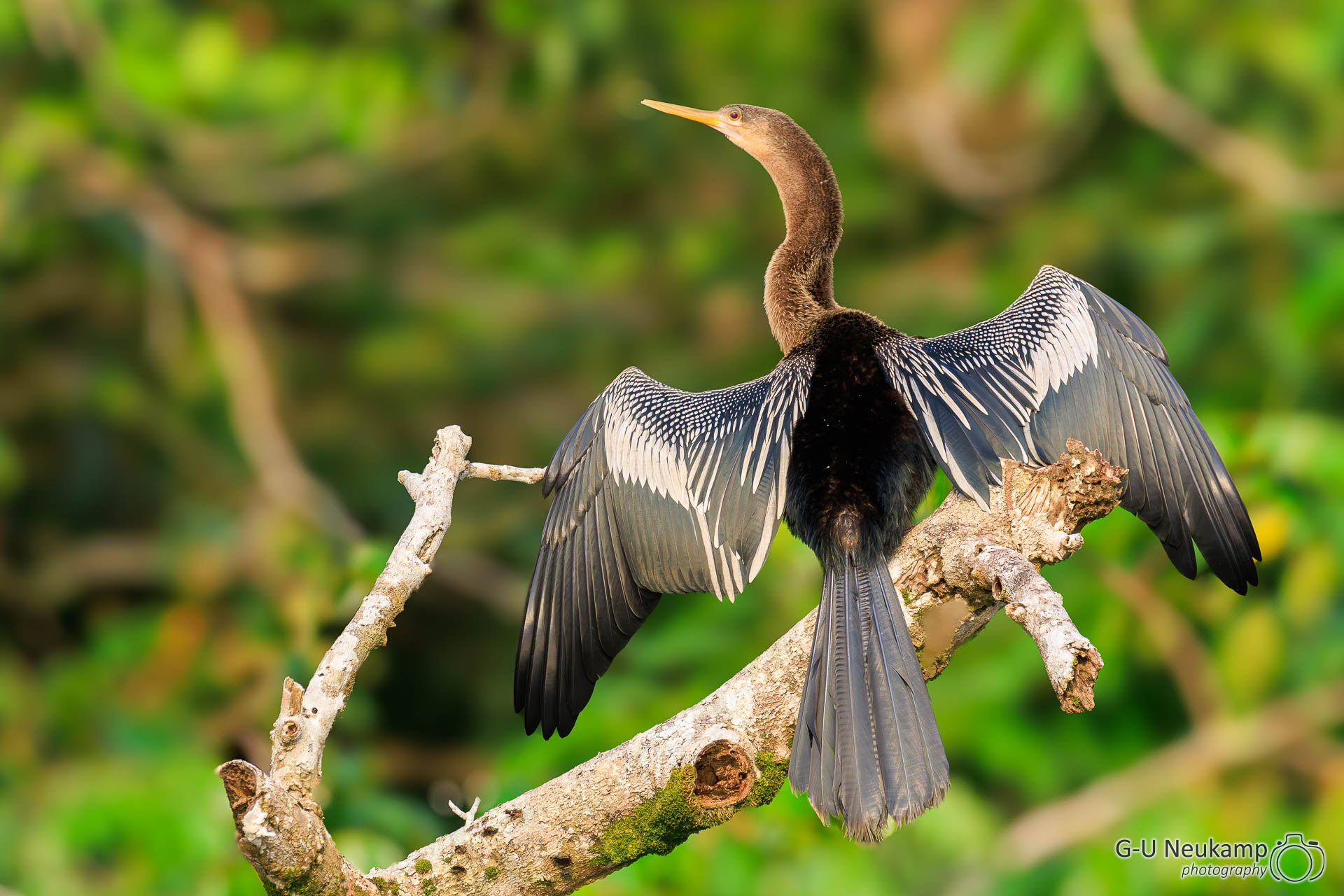
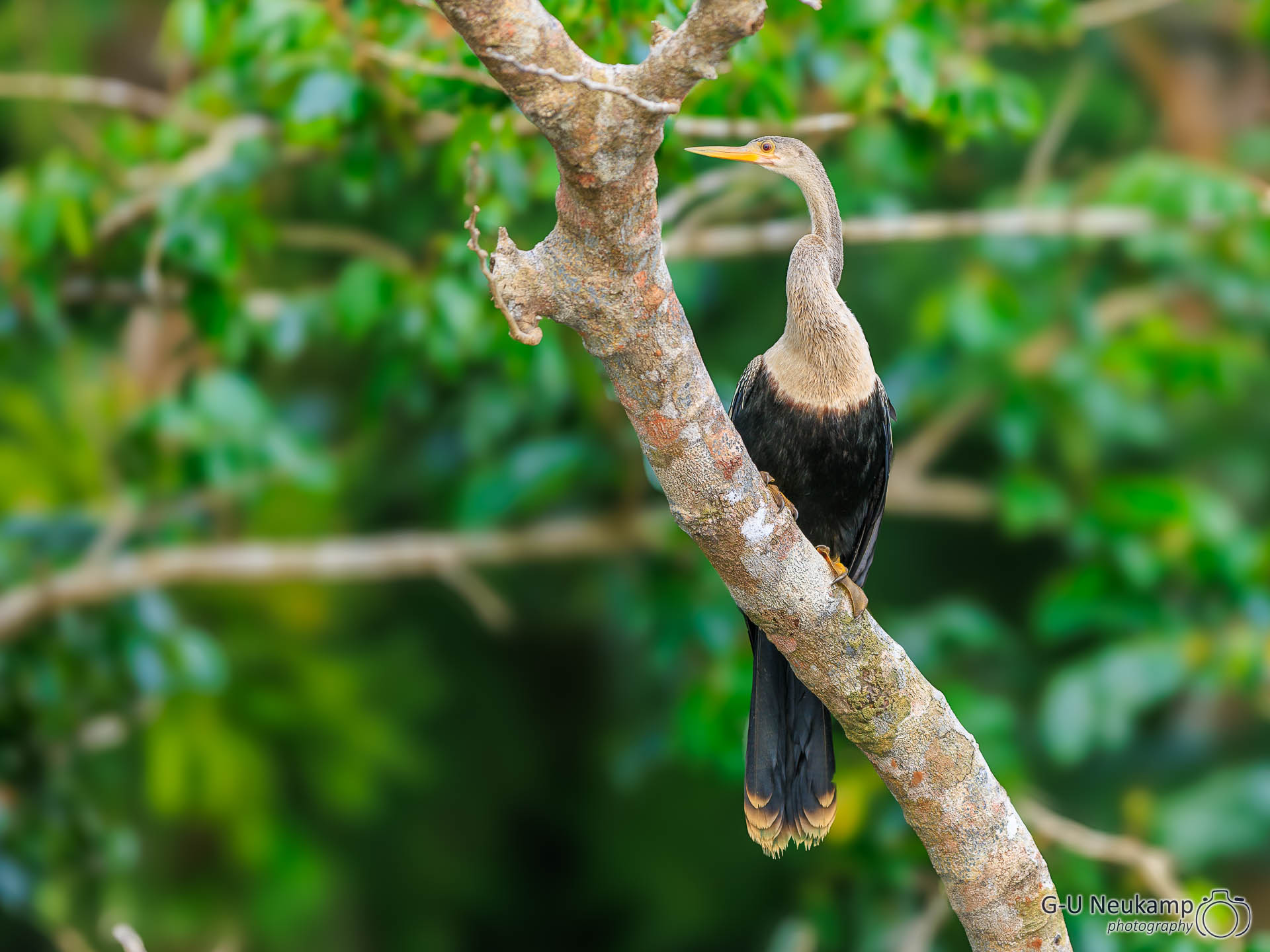
And here’s why it’s better not to swim in Costa Rica’s rivers:
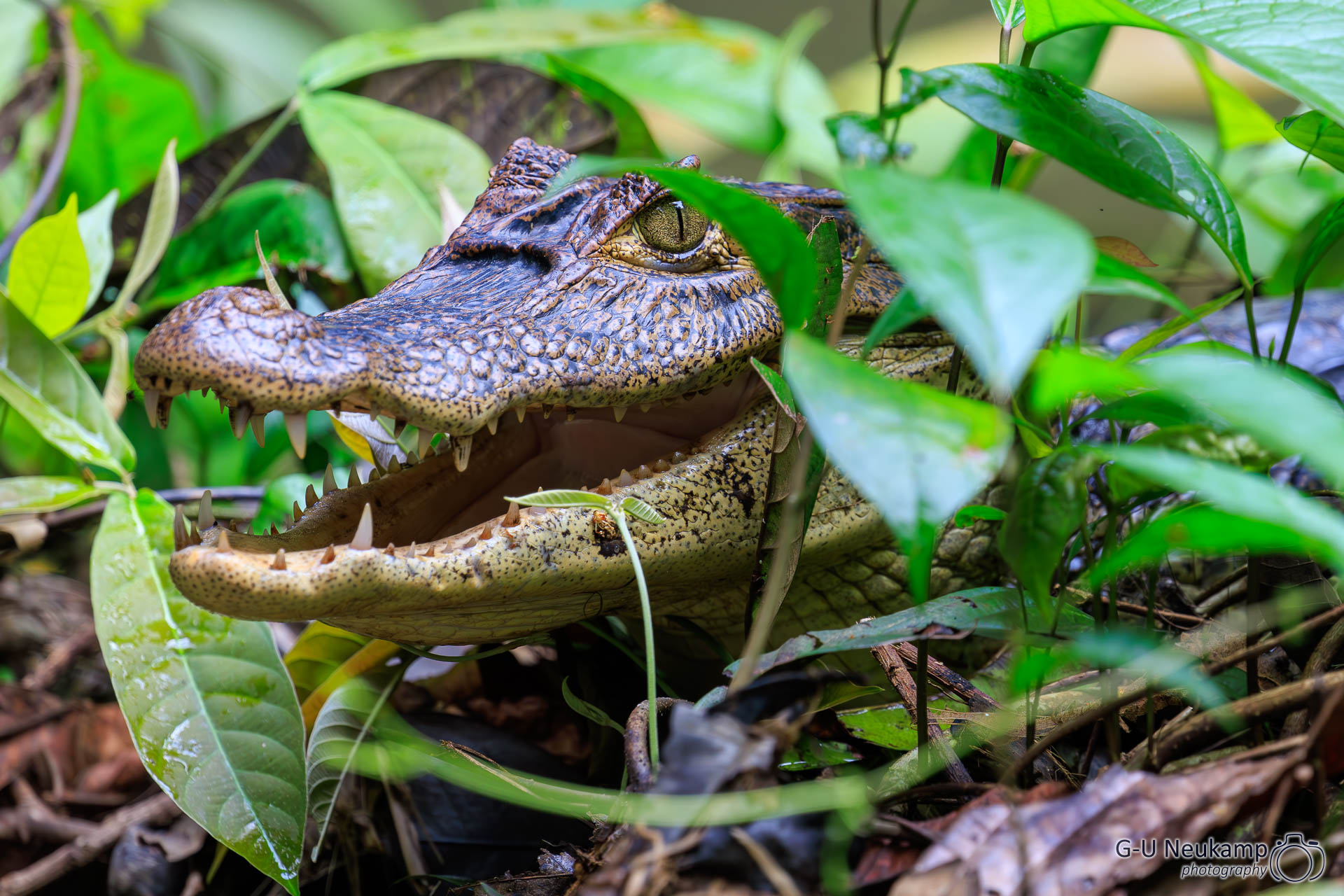
The boat trip took about two hours, after which we had a delicious breakfast with Costa Rican coffee. This is usually prepared “French style” in the lodges. About 60g of ground coffee is put into a pot, which is then filled with 1 liter of hot water. After 2 minutes, a plunger is pressed down to end the brewing process.
There was another large green iguana on the terrace, but we didn’t disturb him. The fresh fruit was always very tasty in Costa Rica - no comparison to the imported fruit at home.
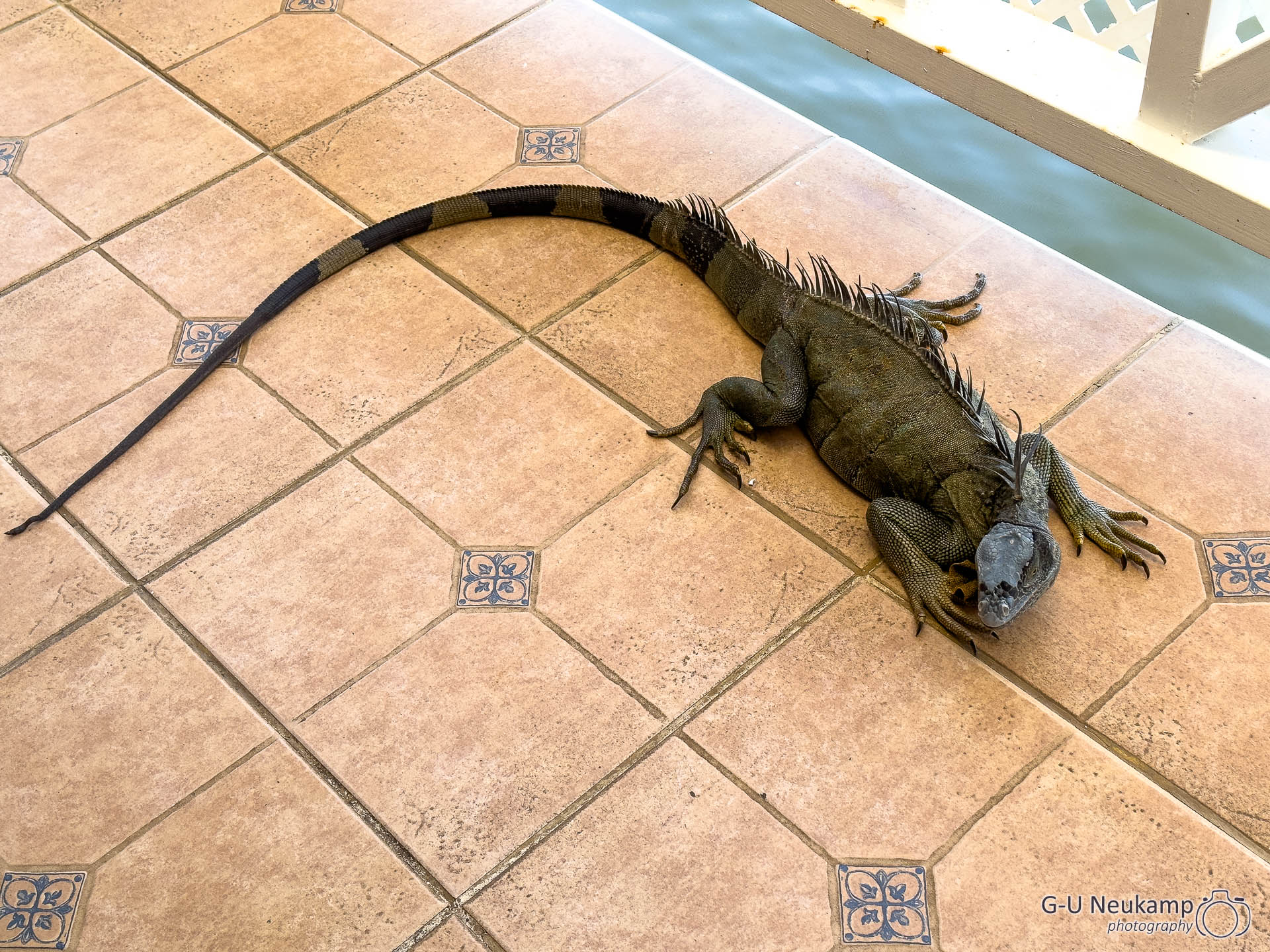

In the afternoon, we took the shuttle boat over to the village again. We hoped to find the green macaws again - and we were lucky:

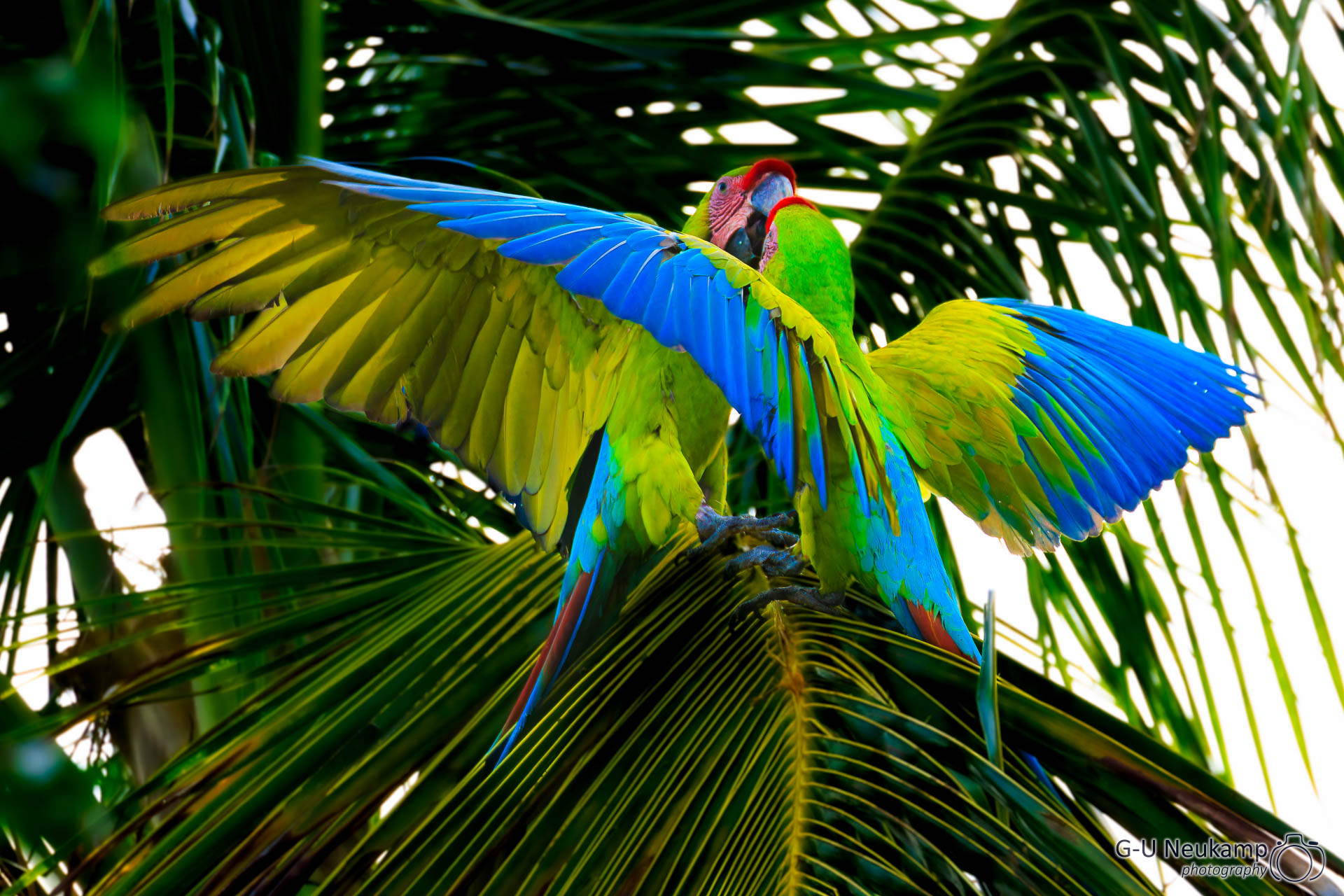

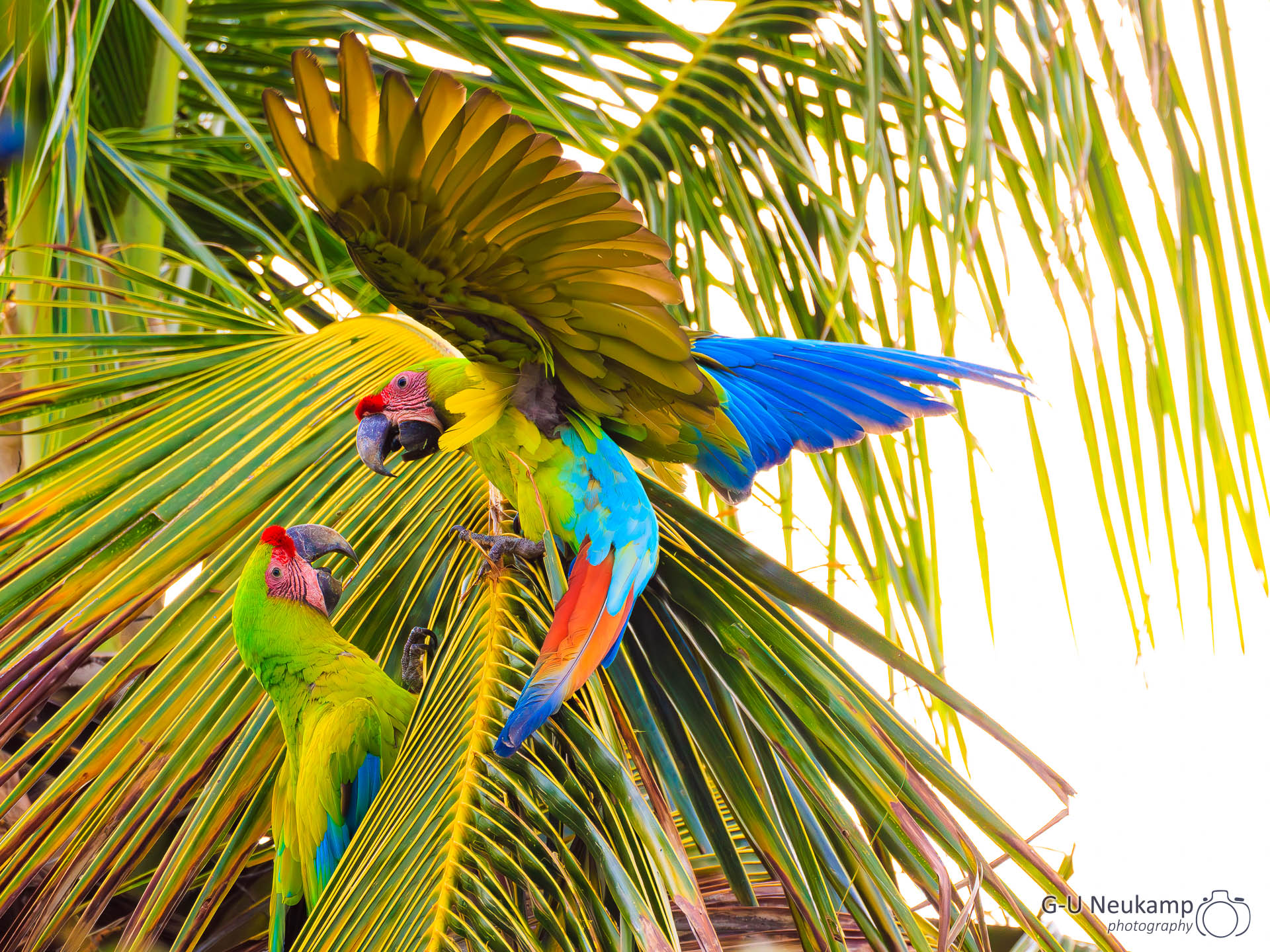
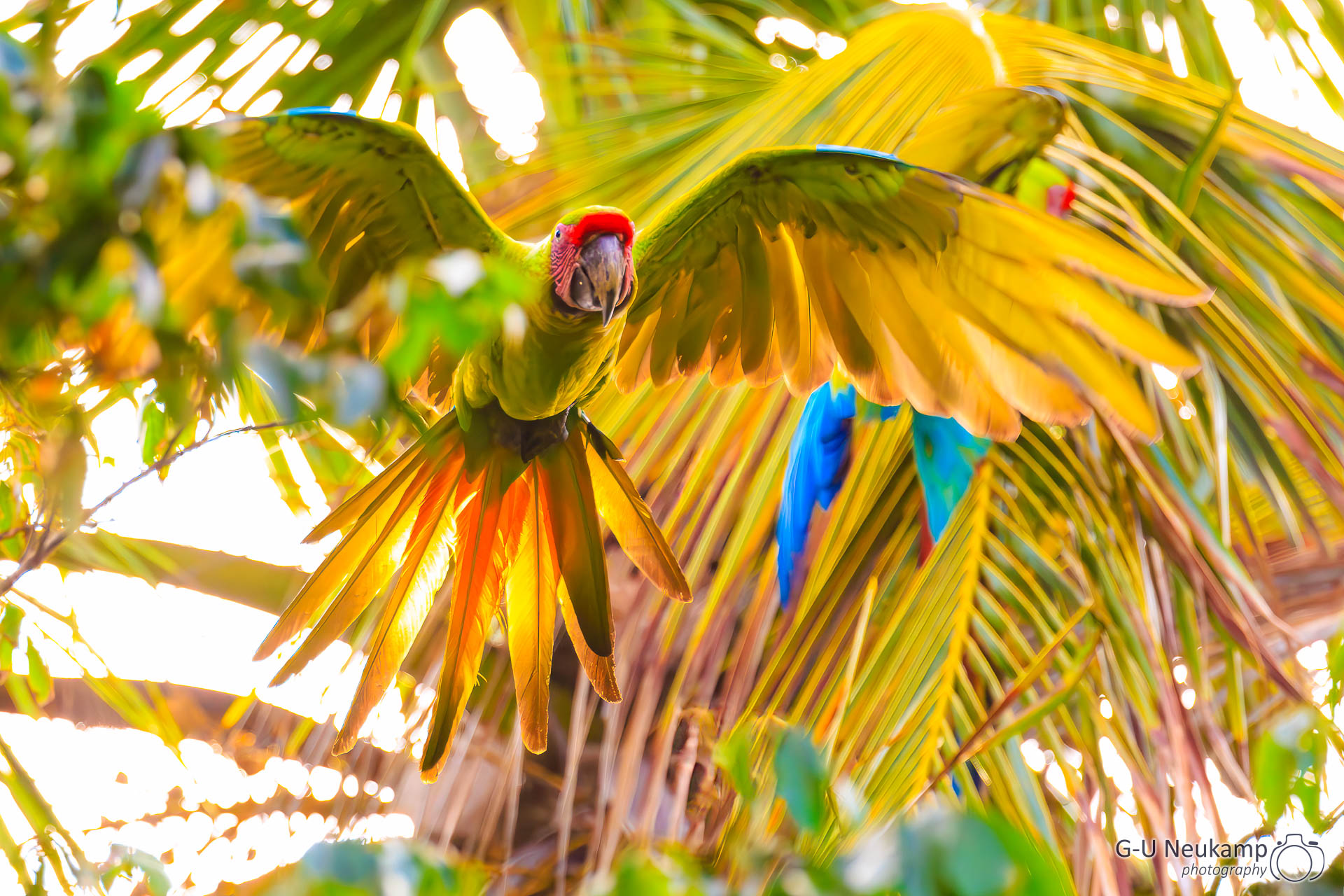


We then strolled through the village and enjoyed a cool drink in a bar by the river. We slowly got used to the Costa Rican slogan:
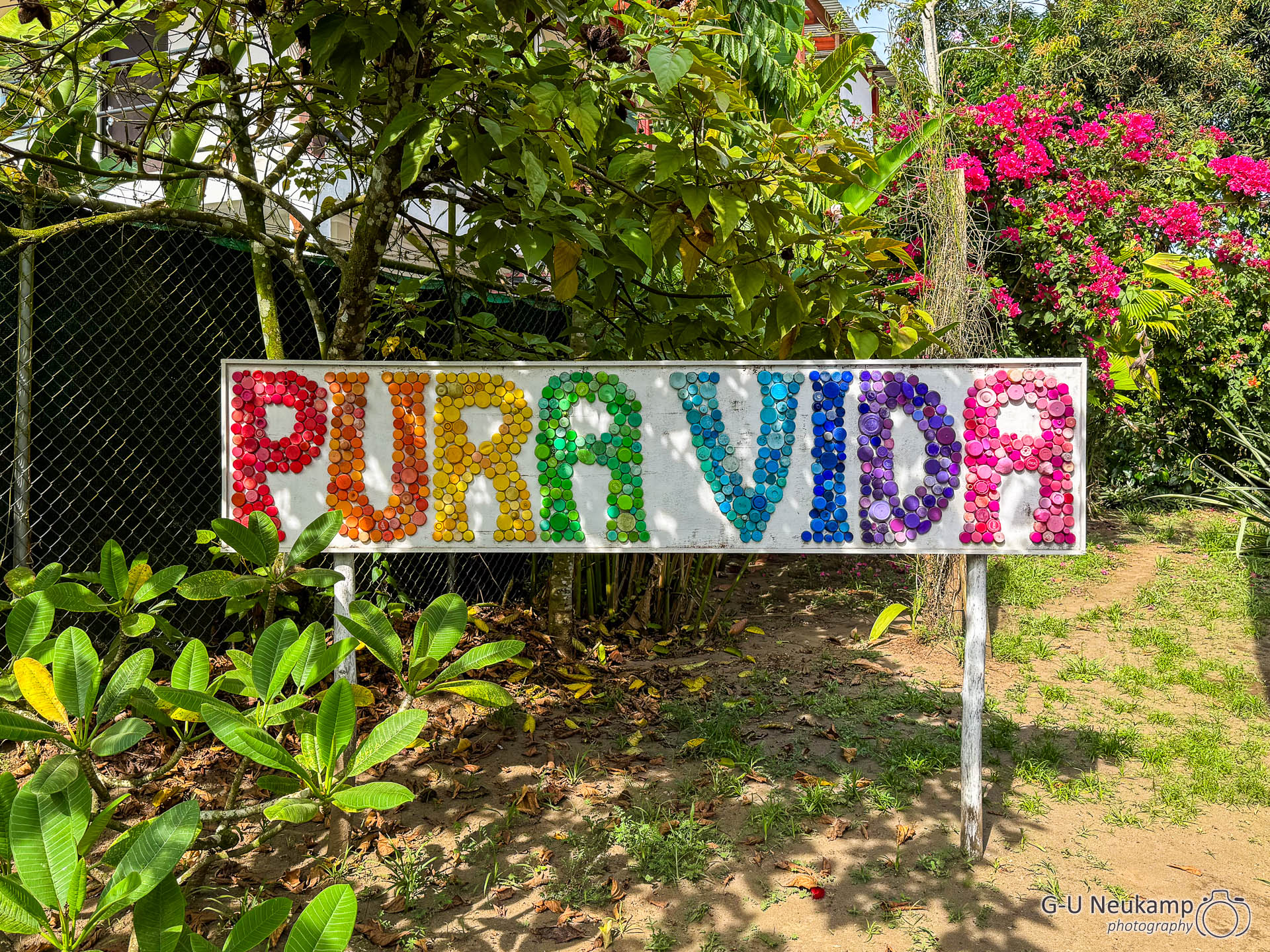
March 20th, 2024
After yesterday’s amazing impressions, we booked another boat tour in the morning and met at the jetty again at 6:00 am. Once again, we were able to spot lots of birds:
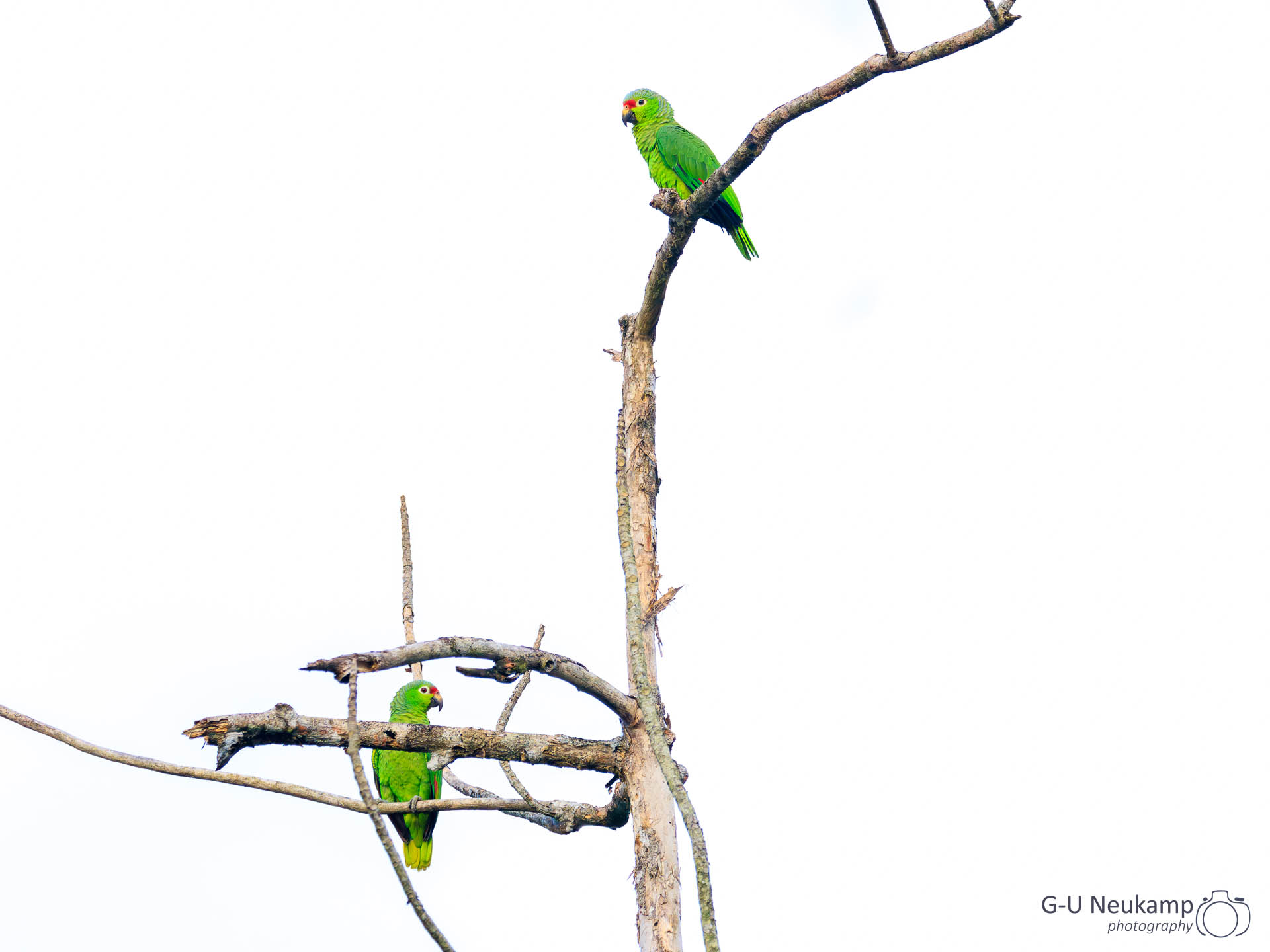

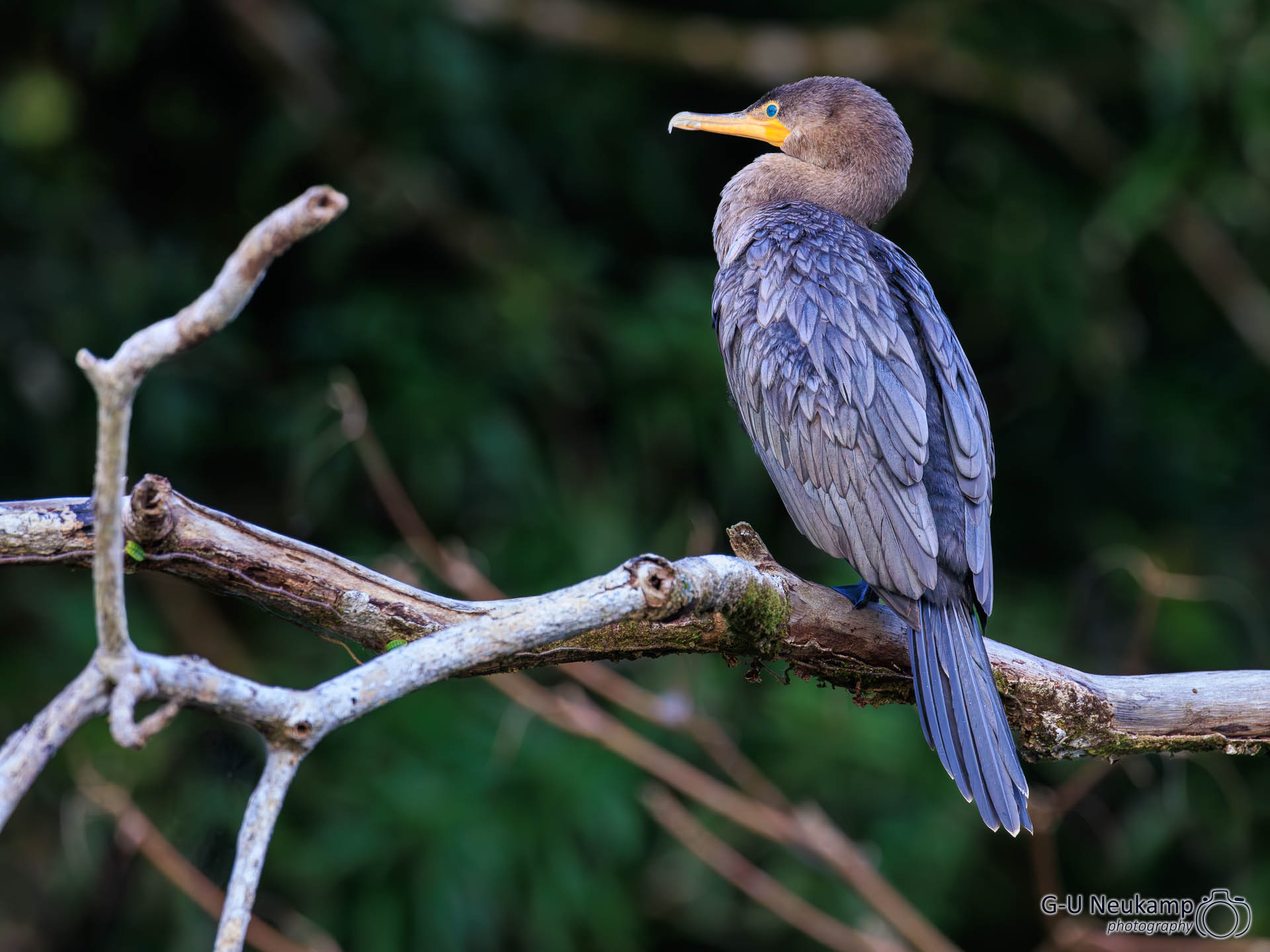
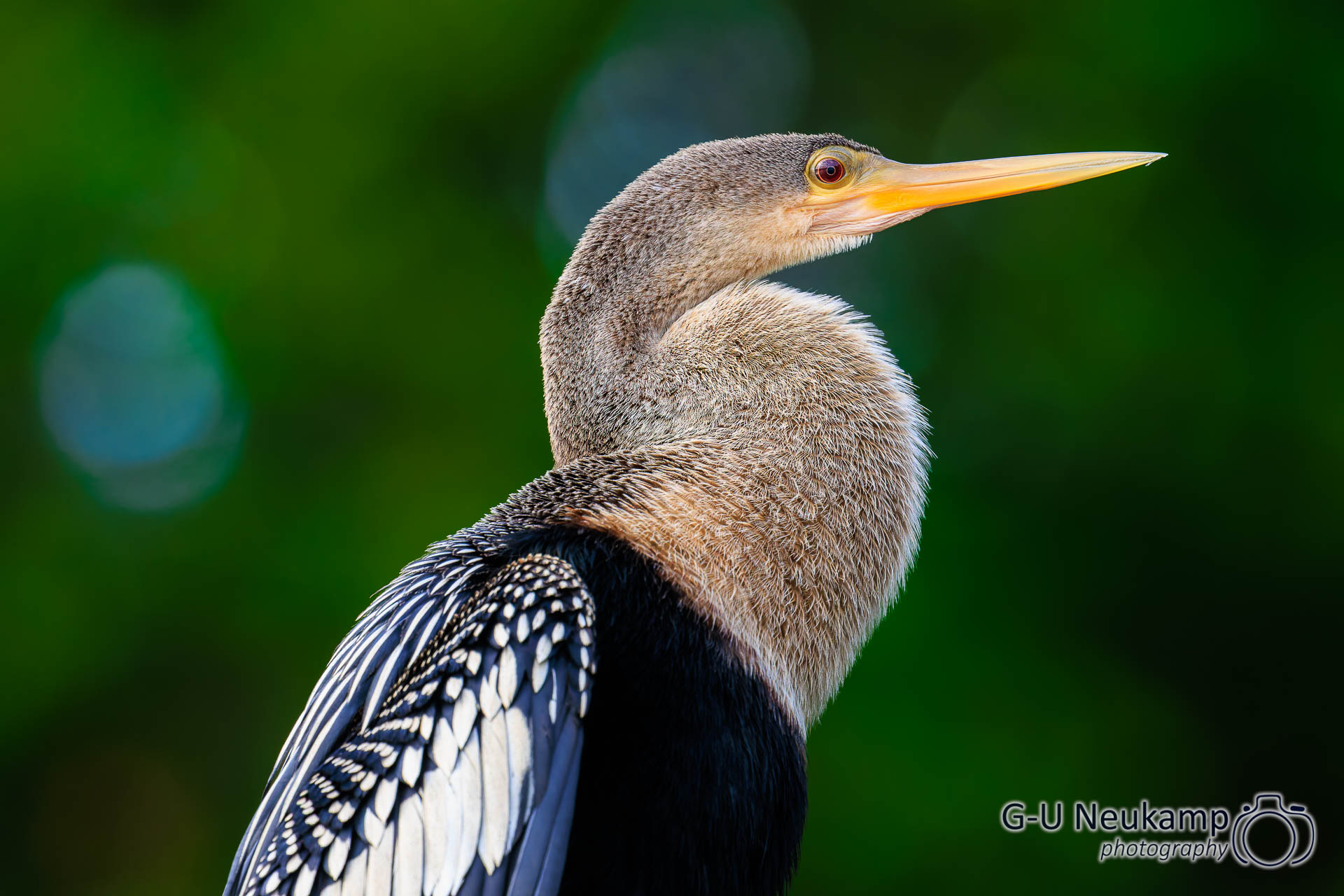
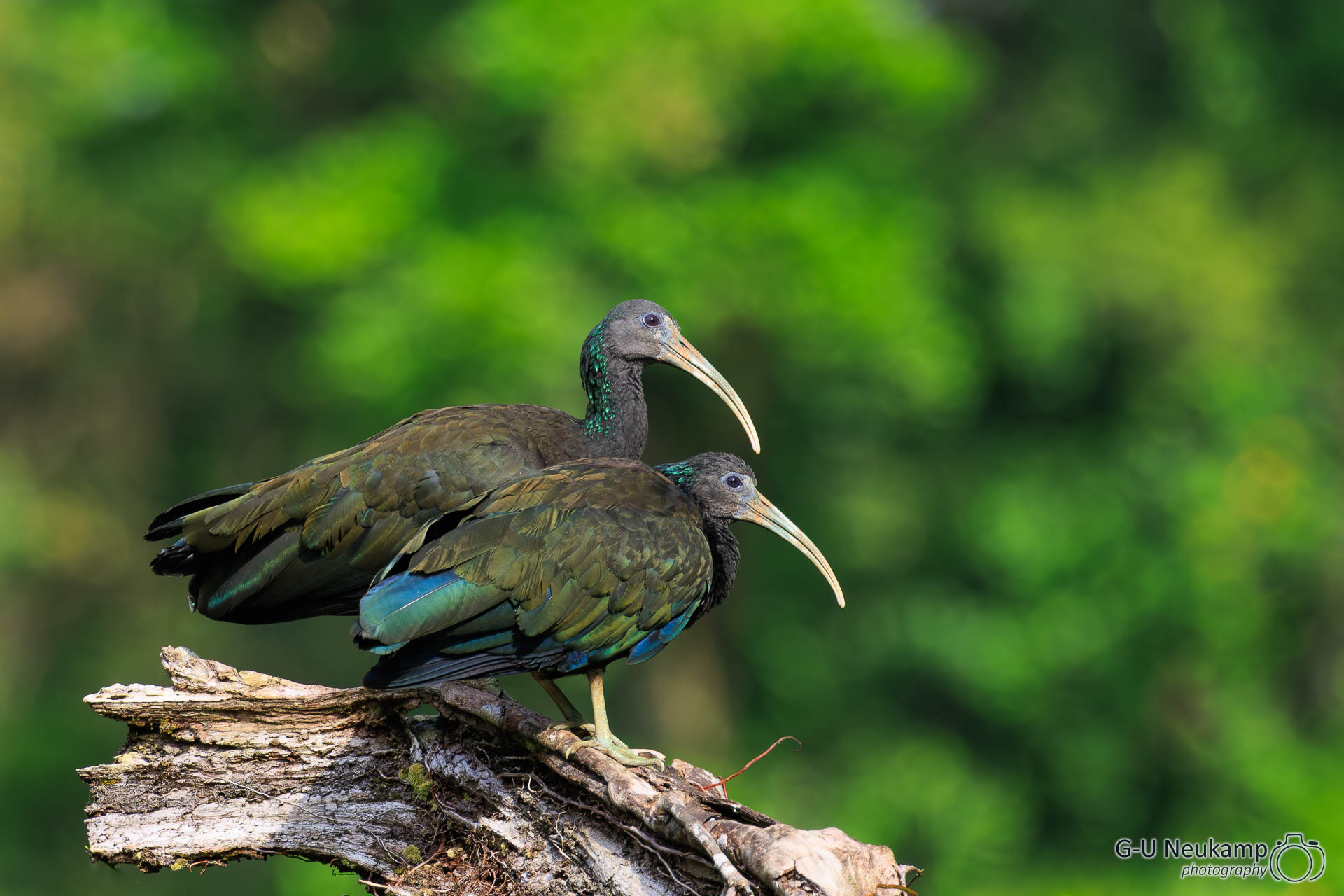
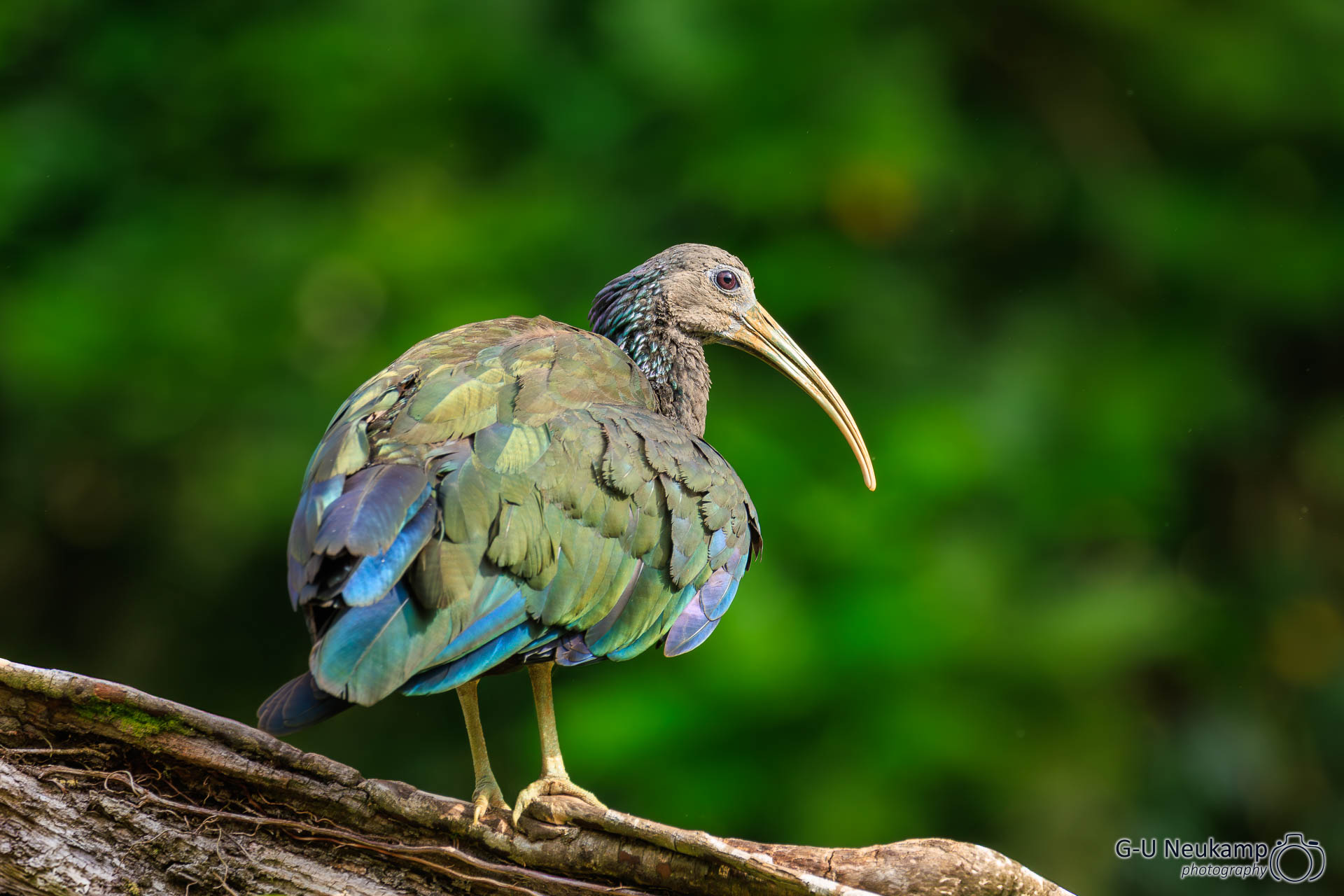
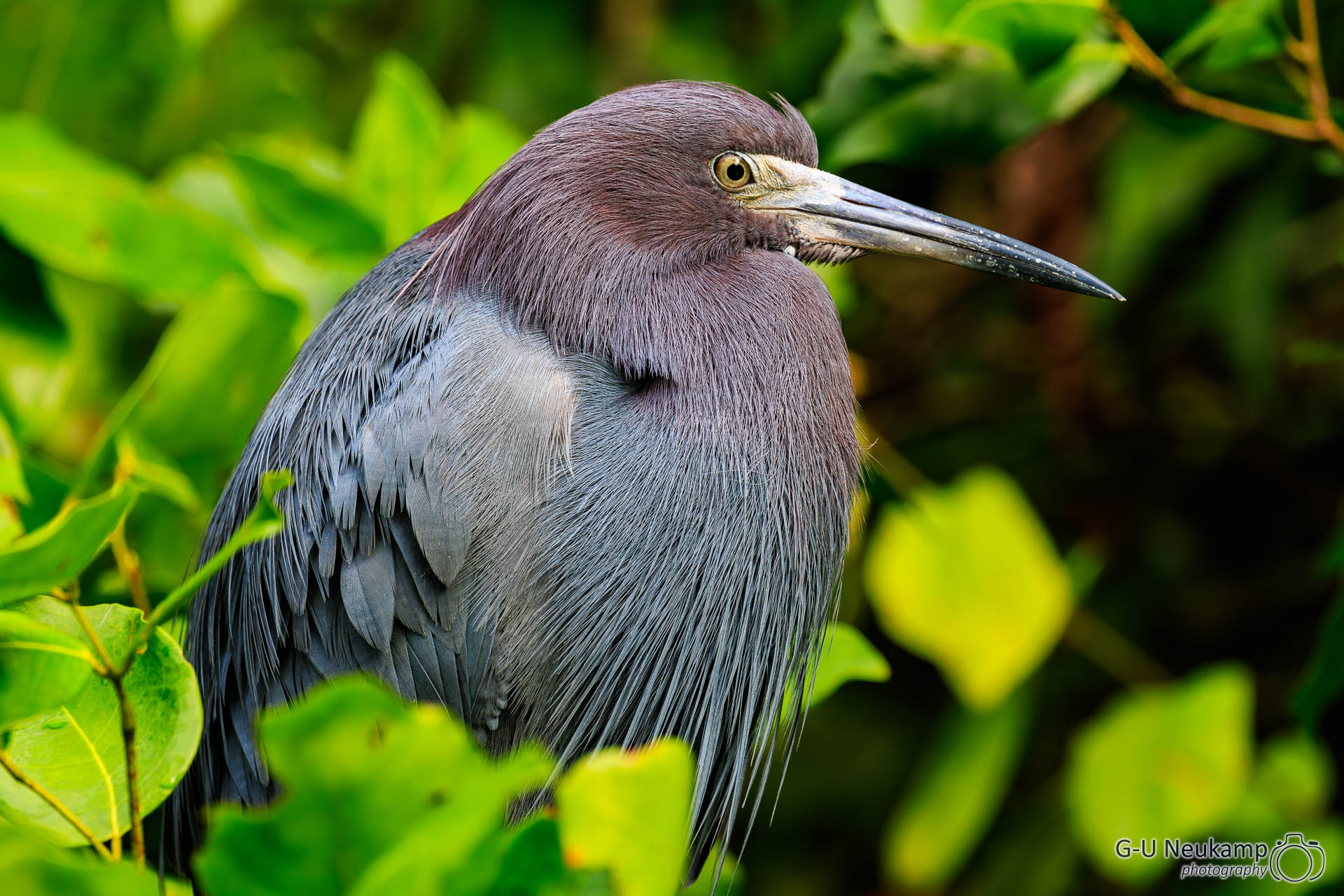
Tortuguero is home to three primate species. In addition to the howler monkeys from the previous day, this time we were also able to photograph the missing capuchin monkeys (white face monkey) and Geoffrey’s spider monkeys:
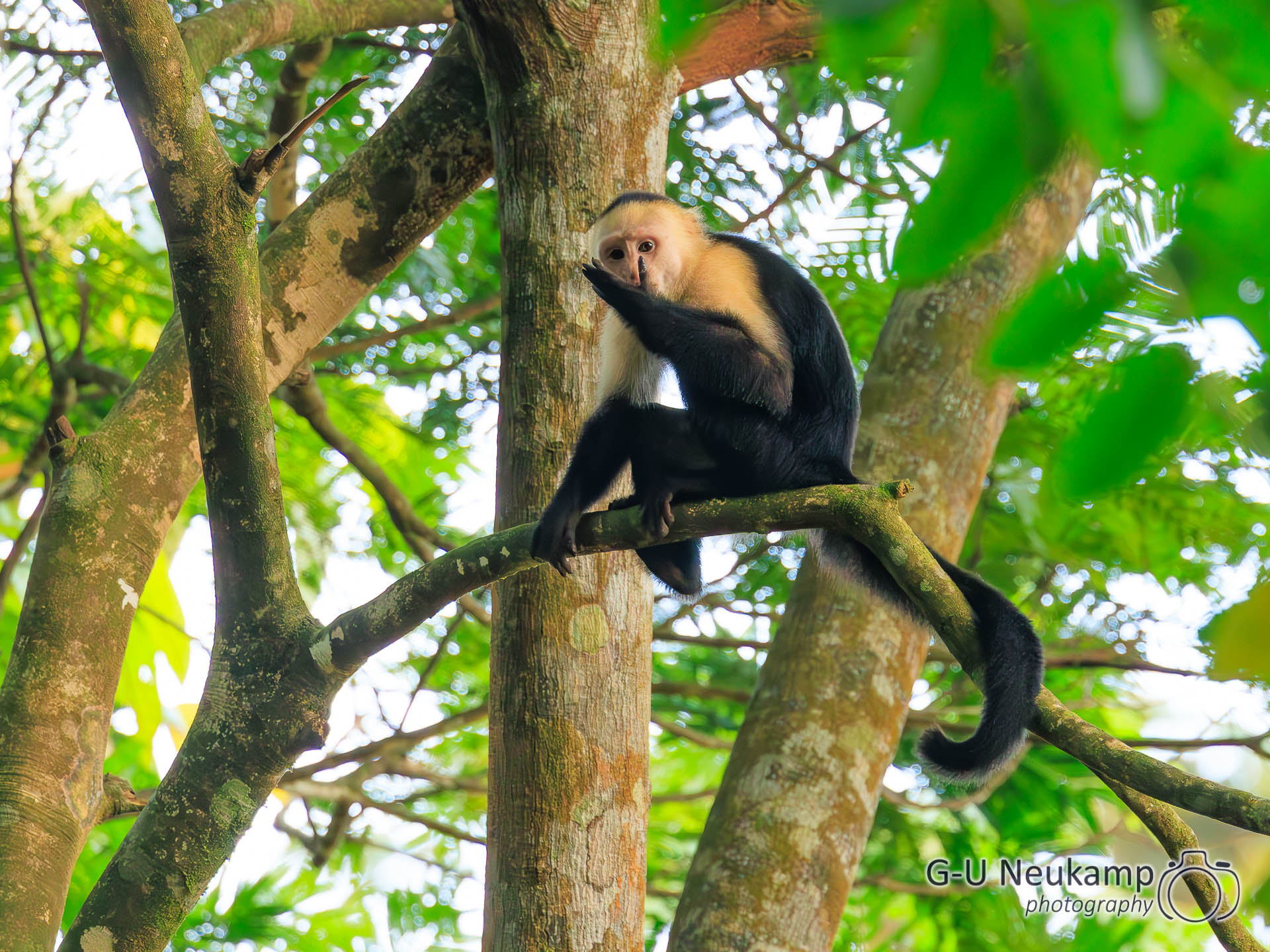

The boat trip again took about two hours. After a delicious breakfast, we met up with a new guide at 10:00 a.m. to “climb” the highest point in Tortuguero, Cerro Tortuguero, which is almost 120 meters tall.
First, we took the boat about 1km downstream and then walked the 120m uphill through the dense jungle. In the heat and humidity, this was a very exhausting undertaking. Drenched in sweat, we enjoyed the view of the final course of the Rio Tortuguero and the Caribbean coast. Here is a panoramic photo from above and a picture to prove it from the summit of Cerro Tortuguero 😉:
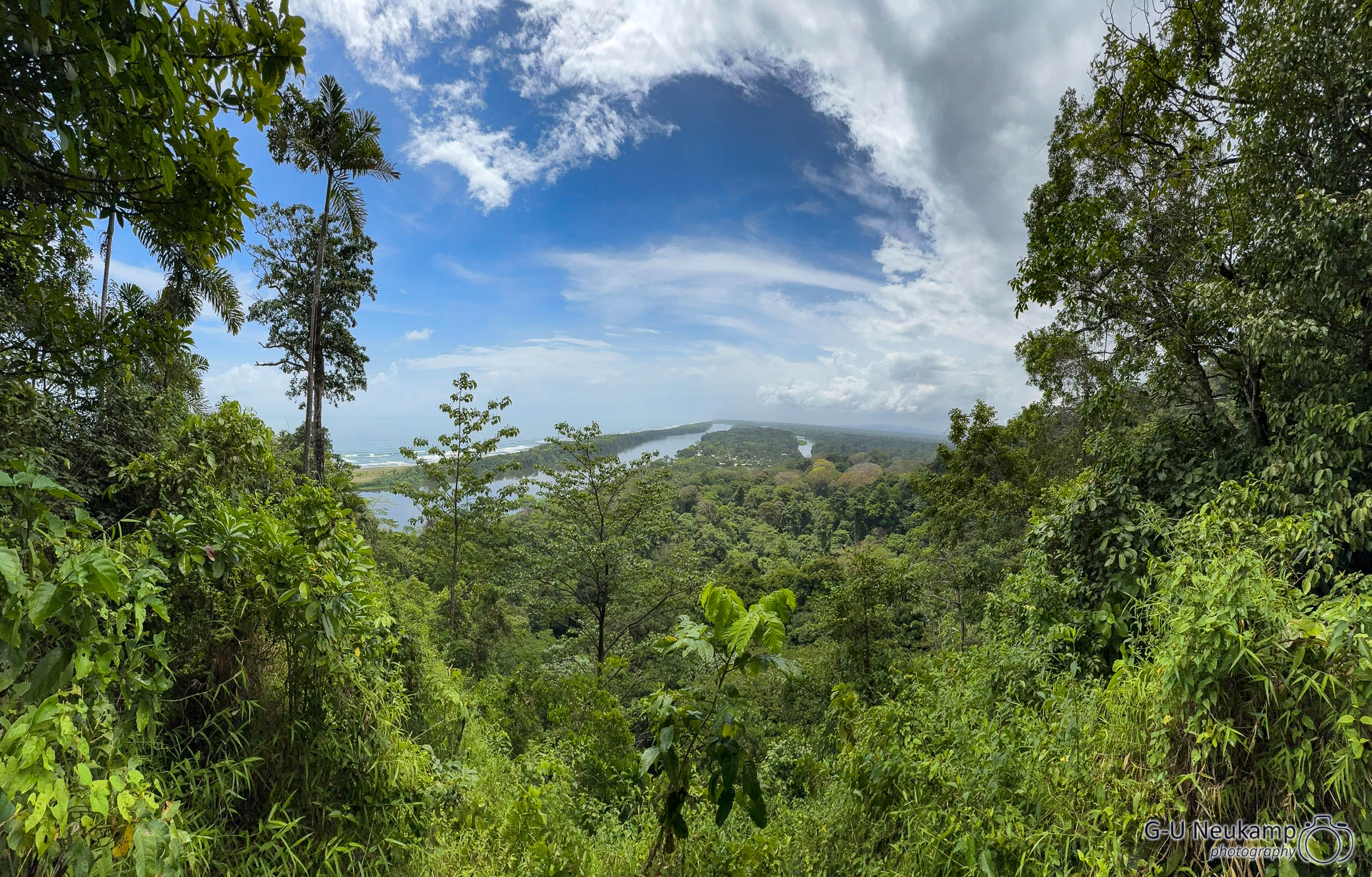
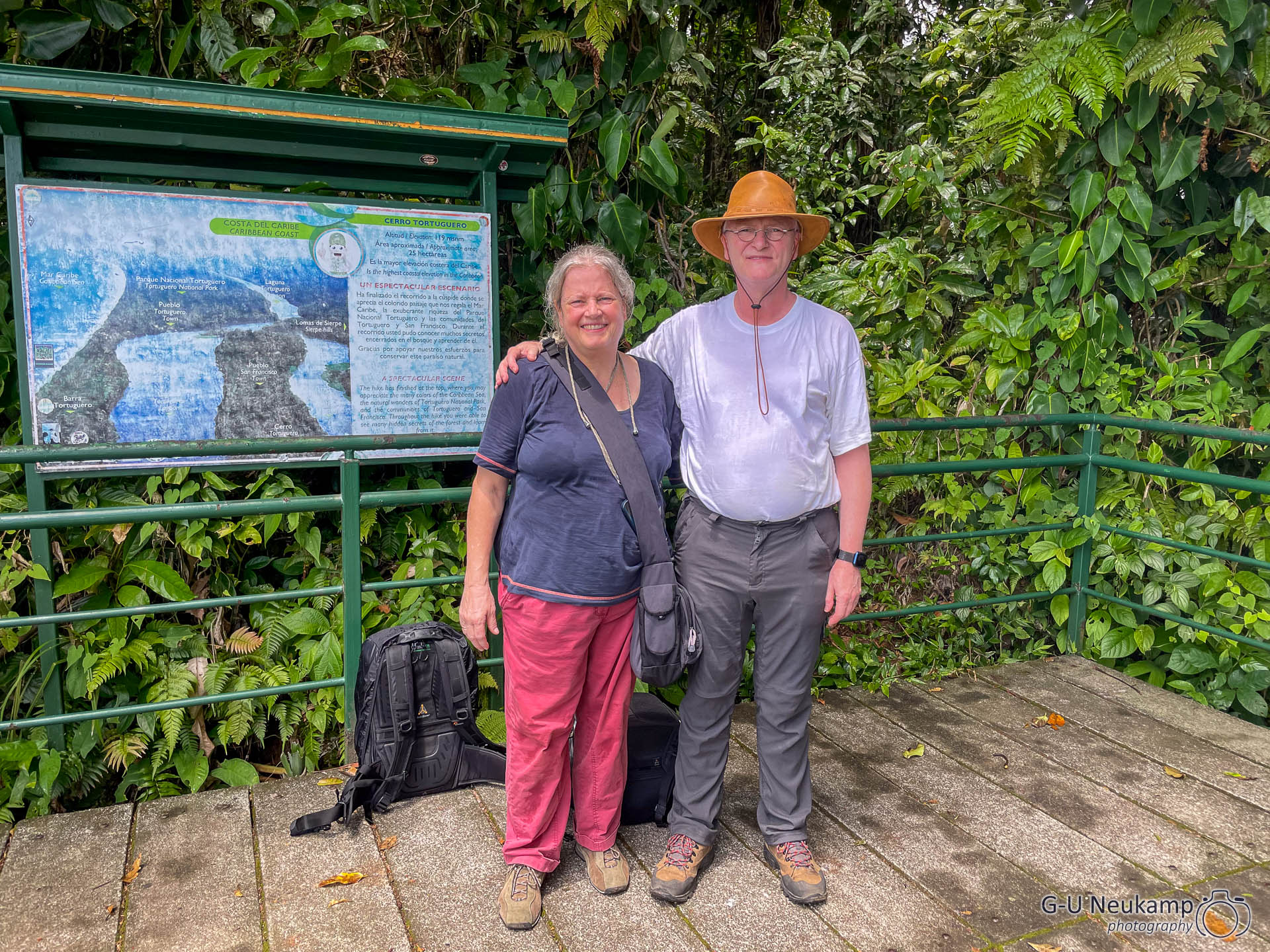
We then went back down the same path and through a small village at the foot of the hill called San Francisco. We then took the boat back to the lodge and recovered from the exertion…
In the evening, I launched my drone and took a few last shots of our beautiful hotel complex:
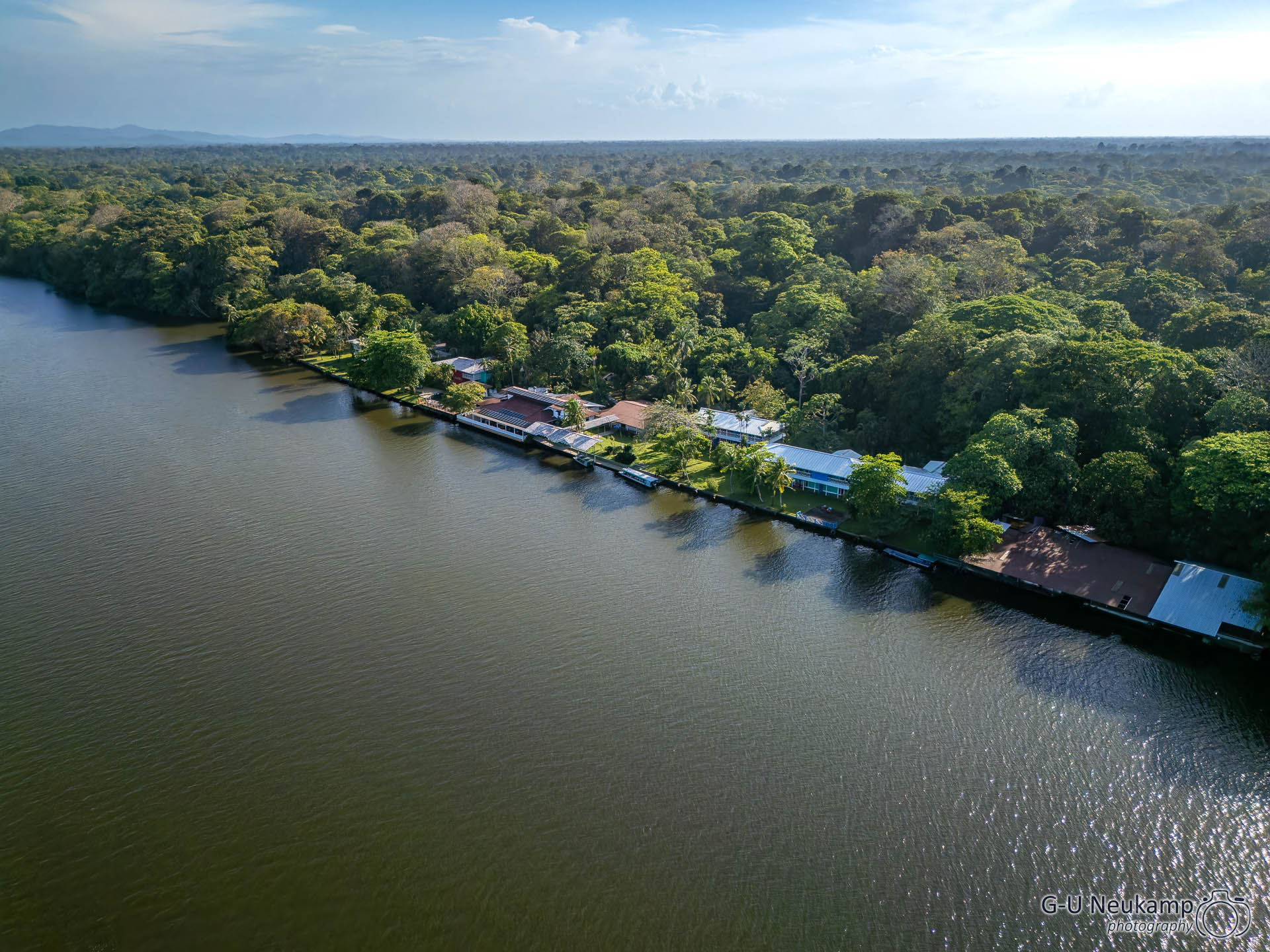
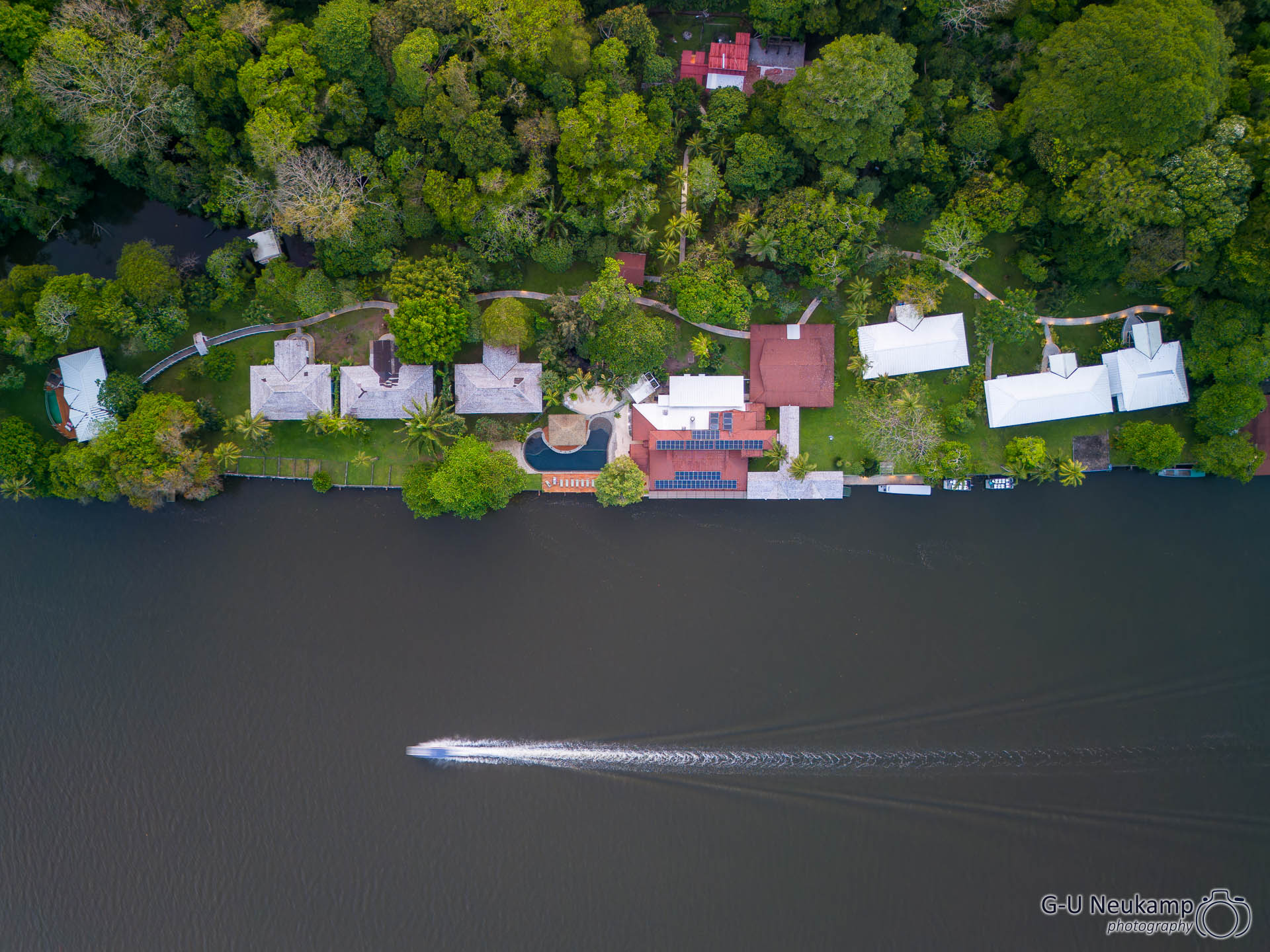
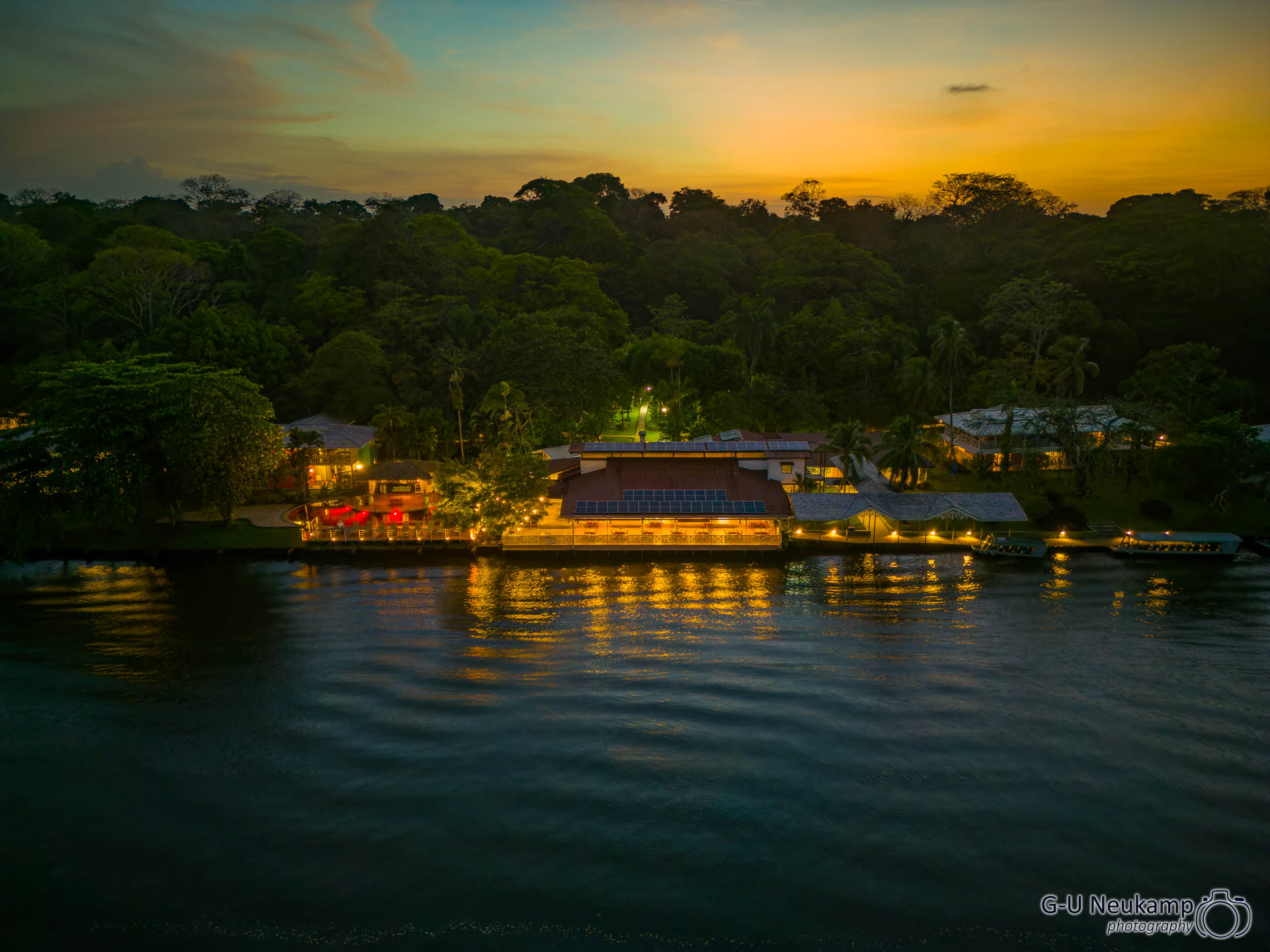
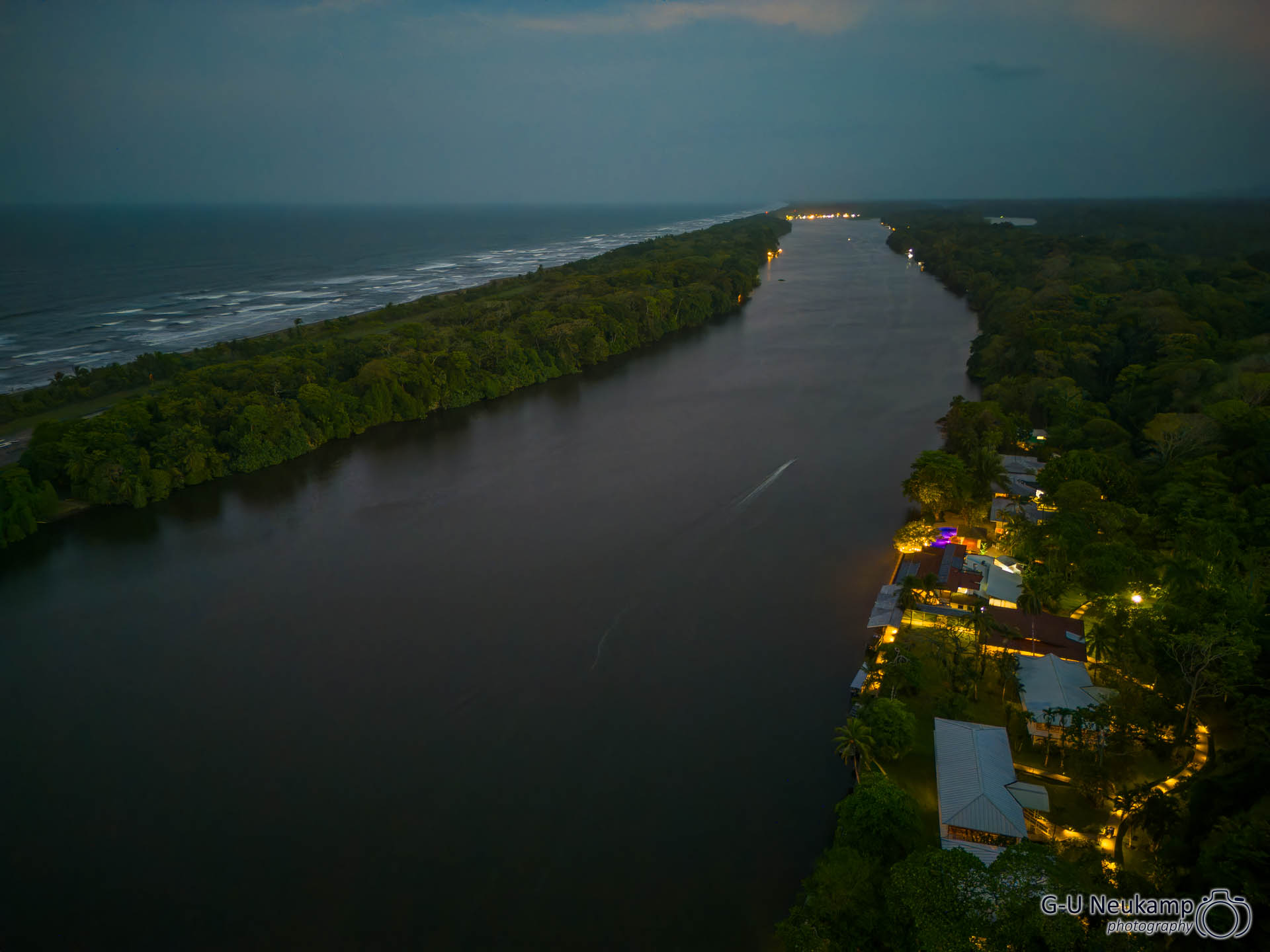
After a cocktail and another delicious dinner at the lodge, we fell into bed exhausted. The next morning we continue to the next location.
